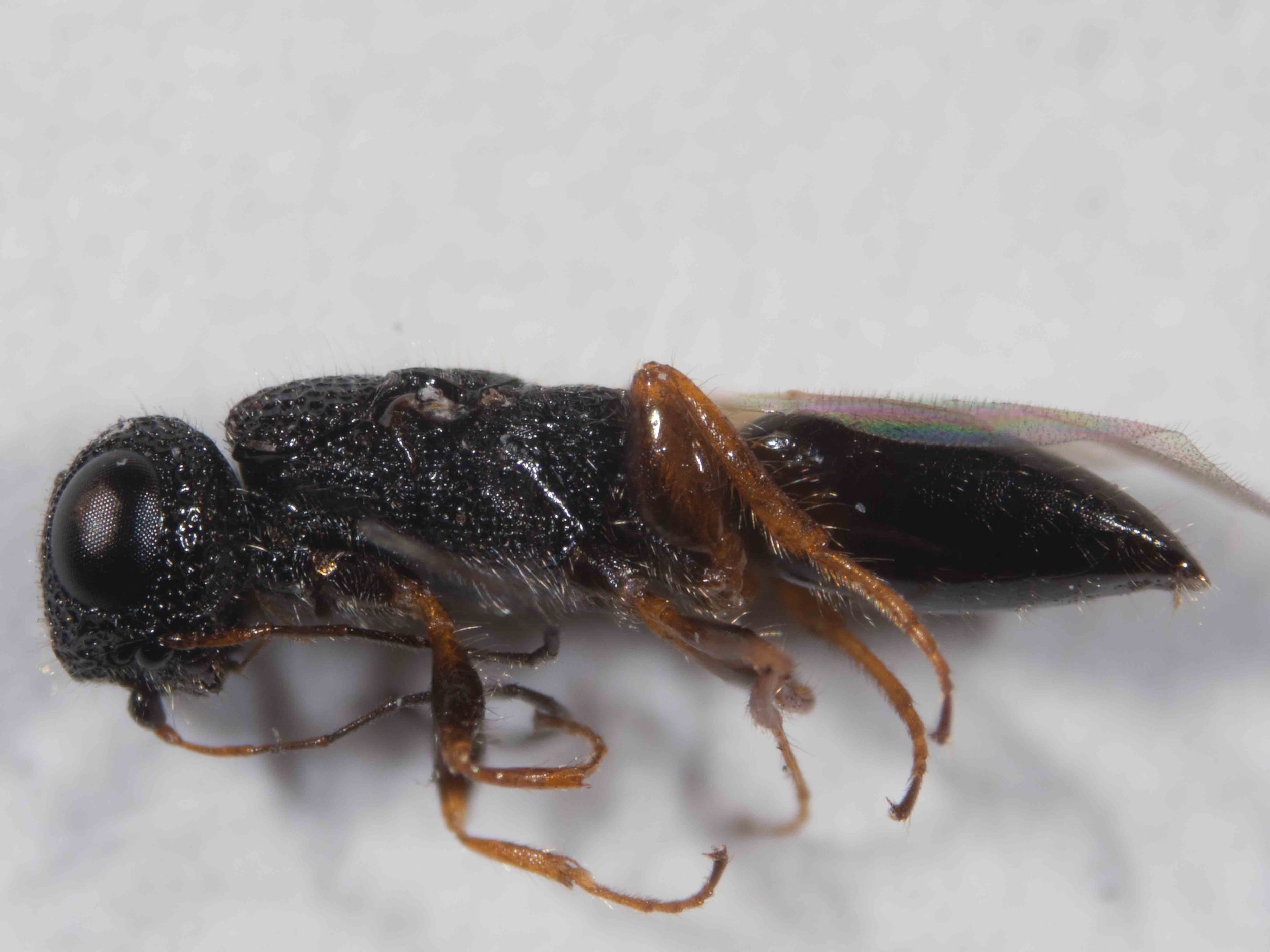
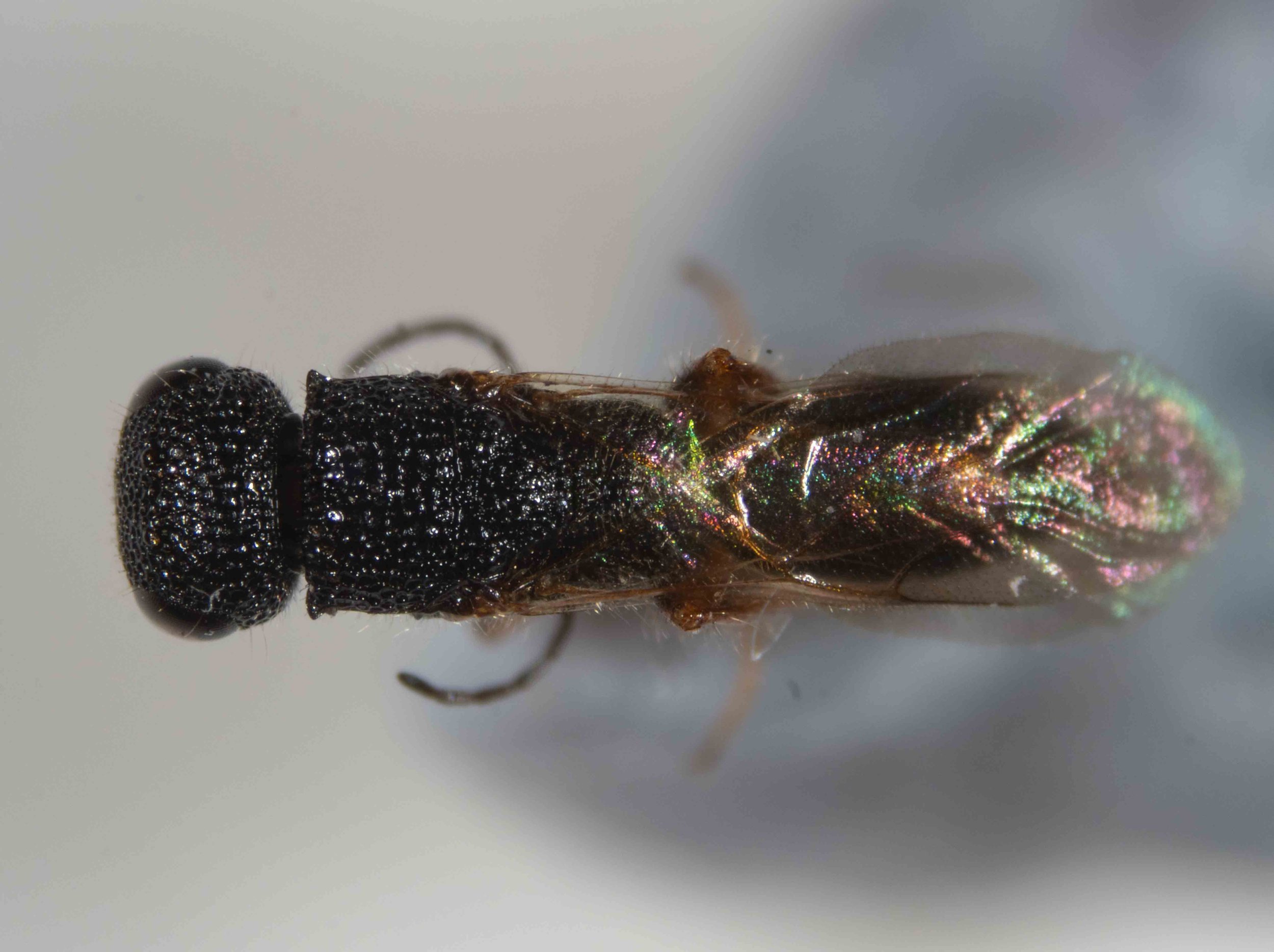
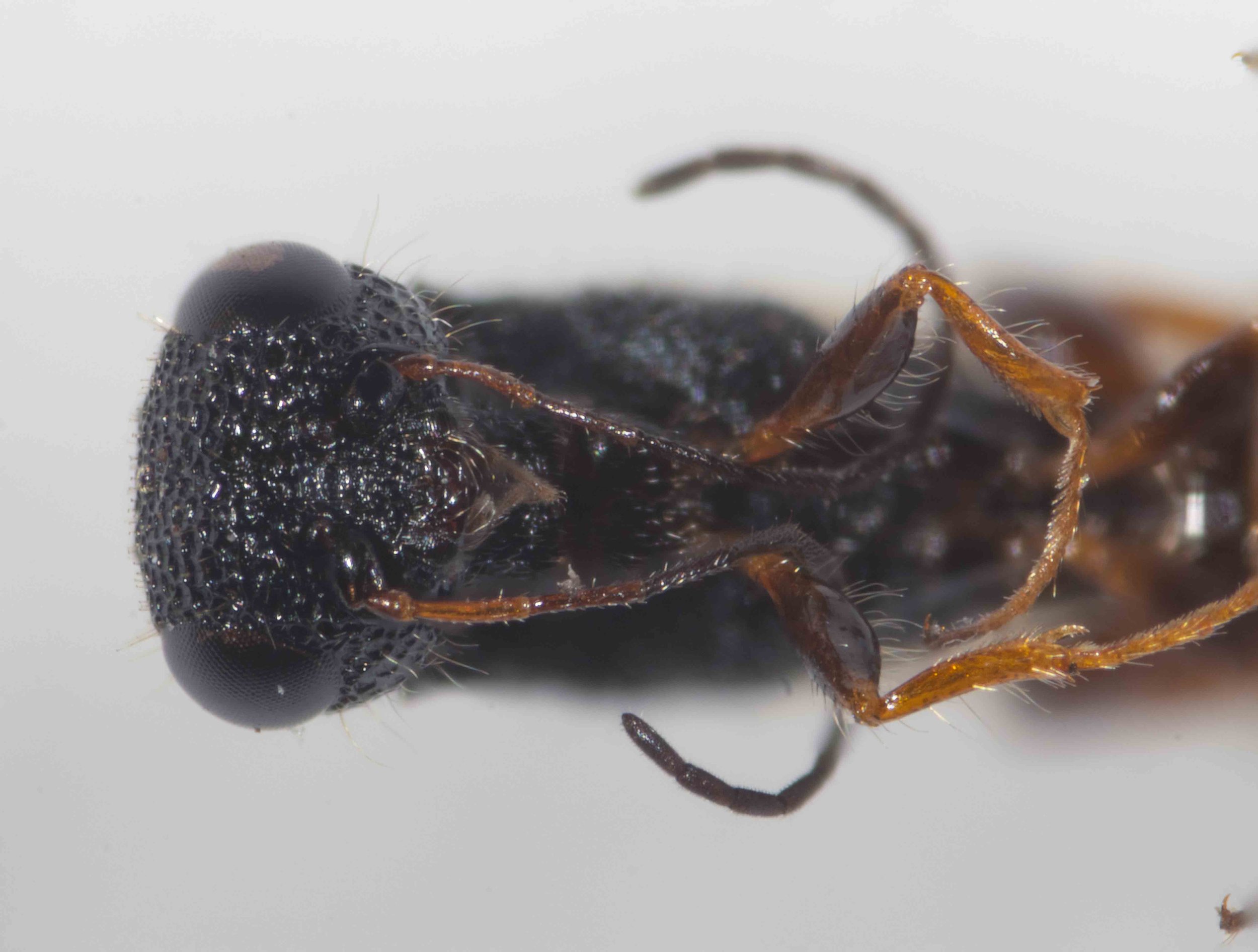
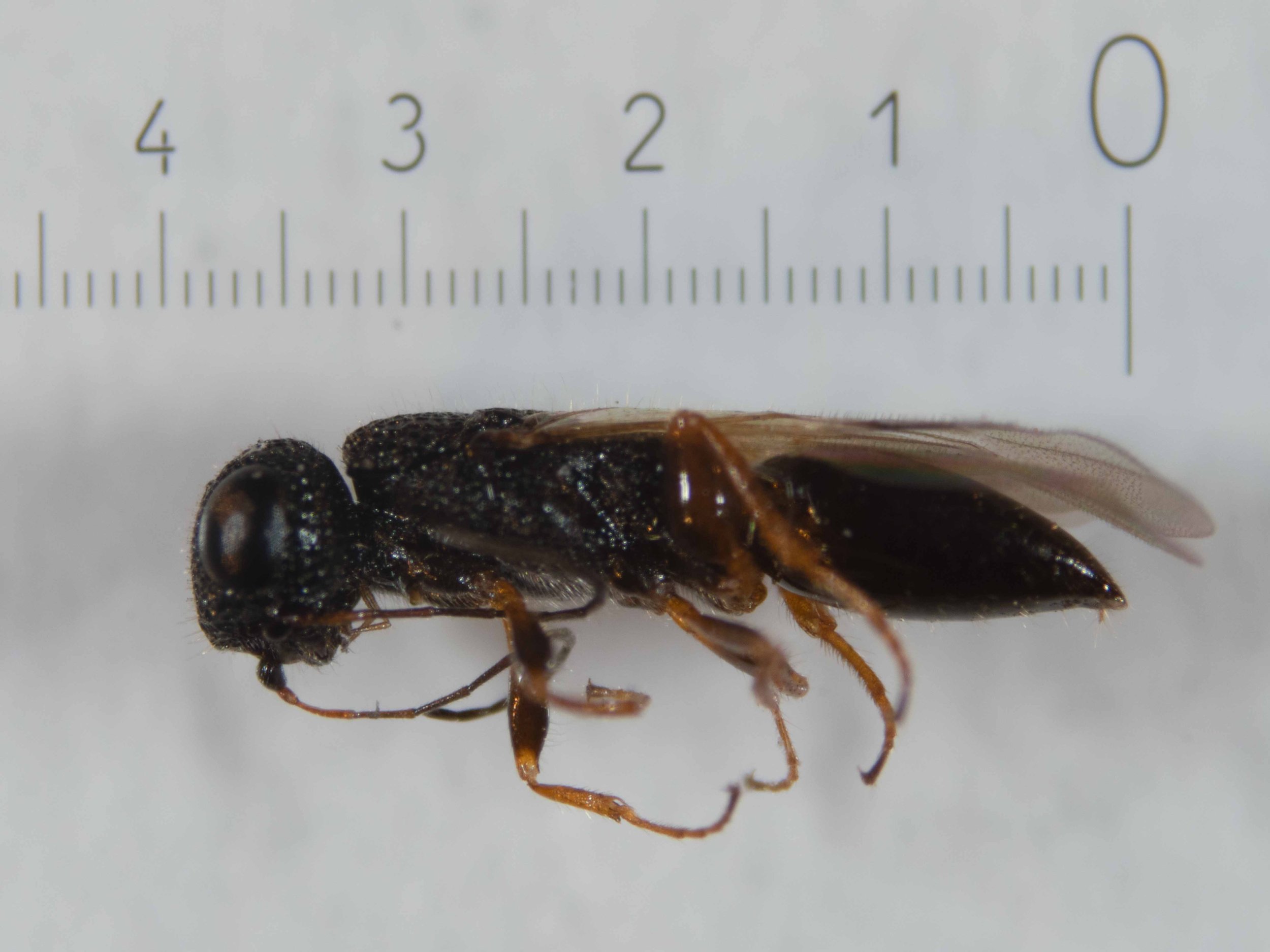
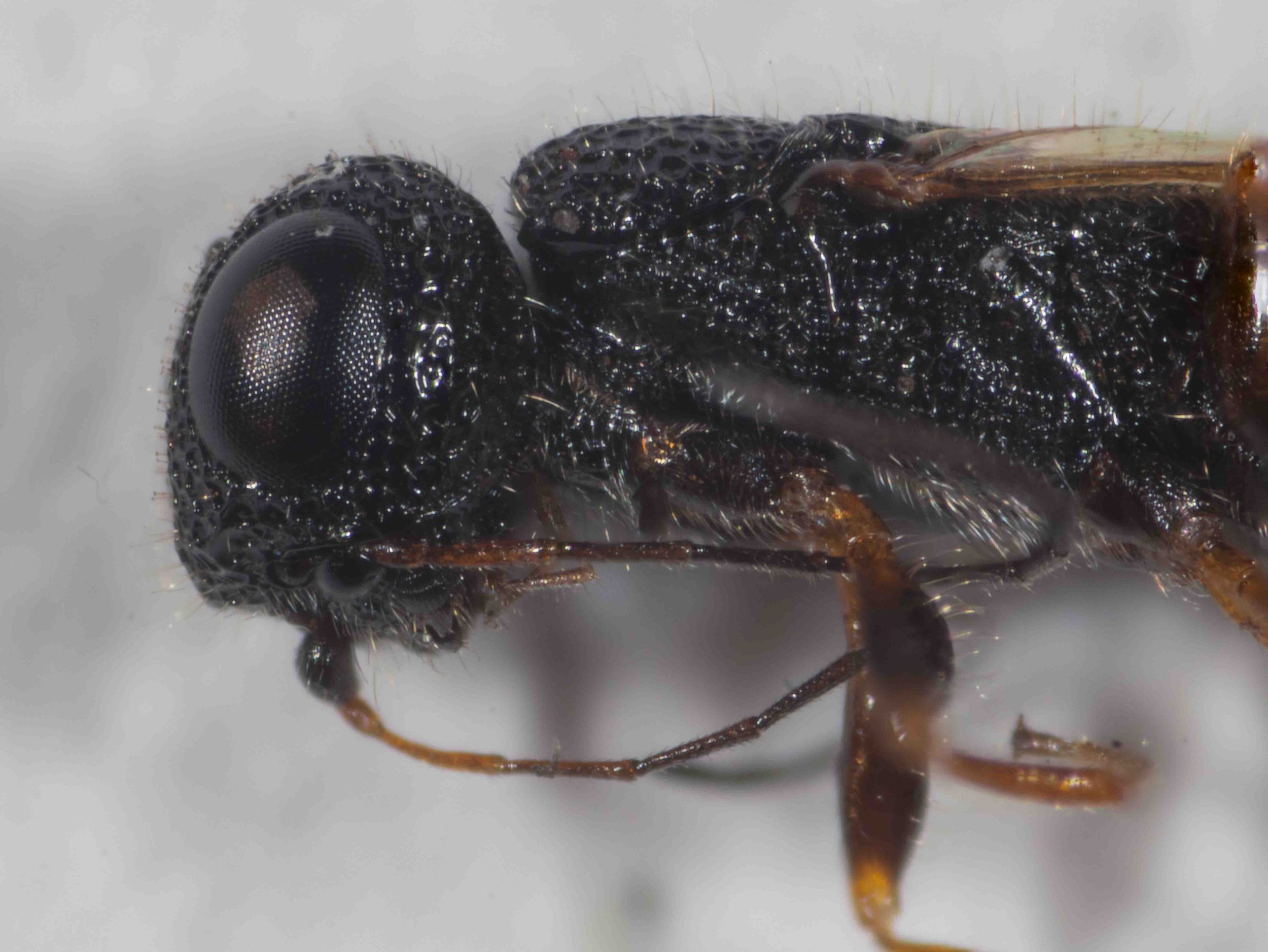
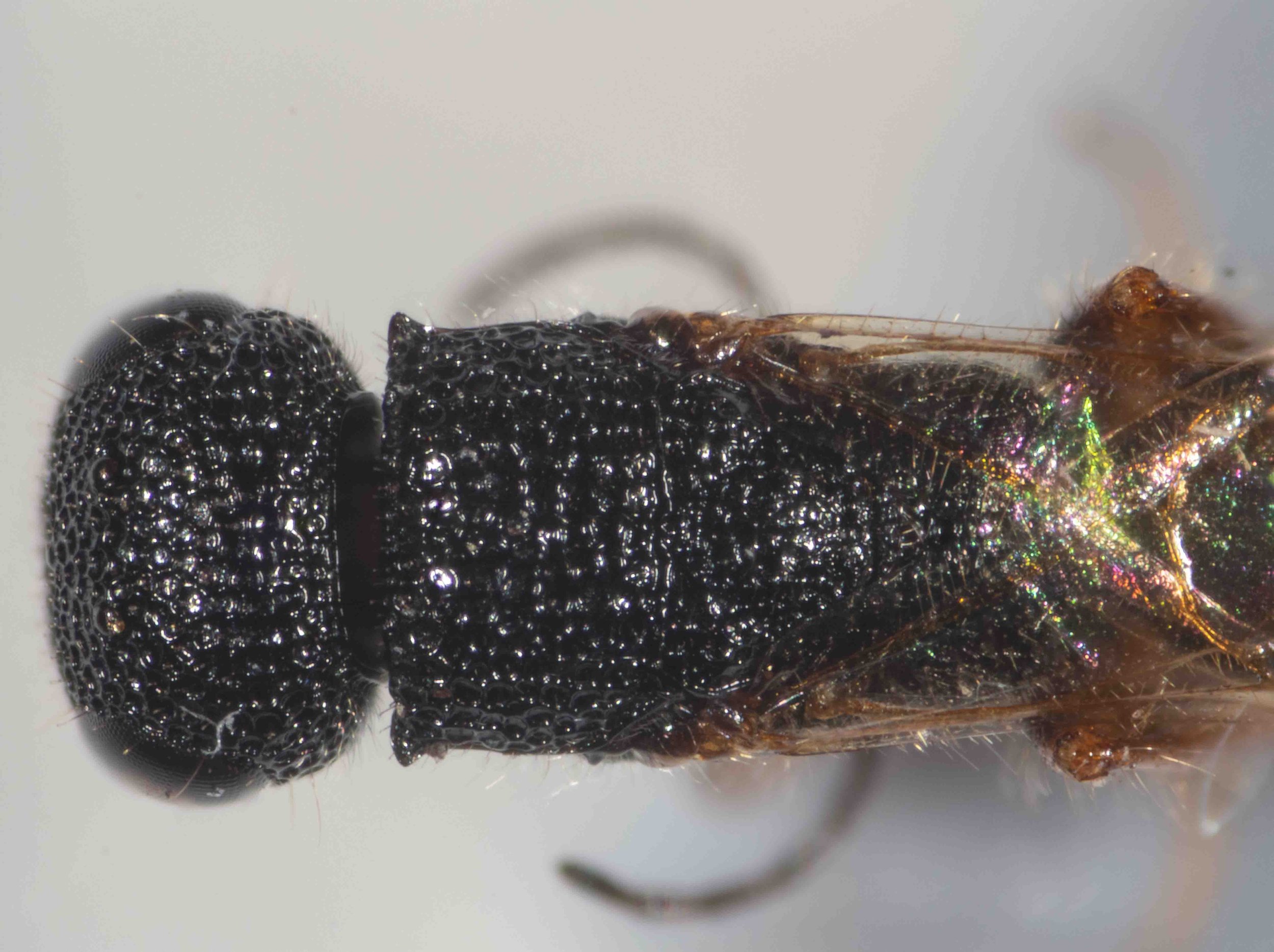
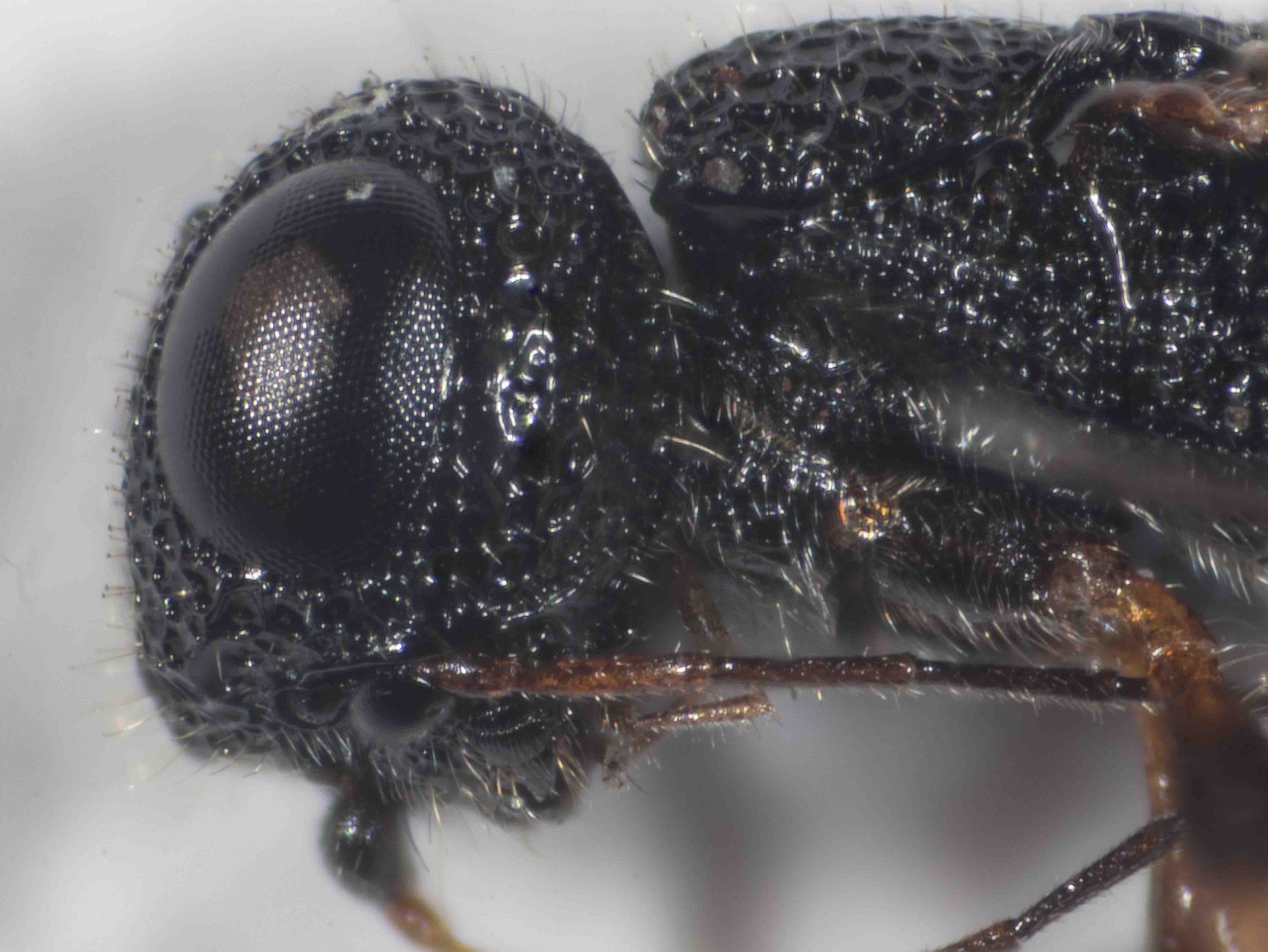

14 antennal segments
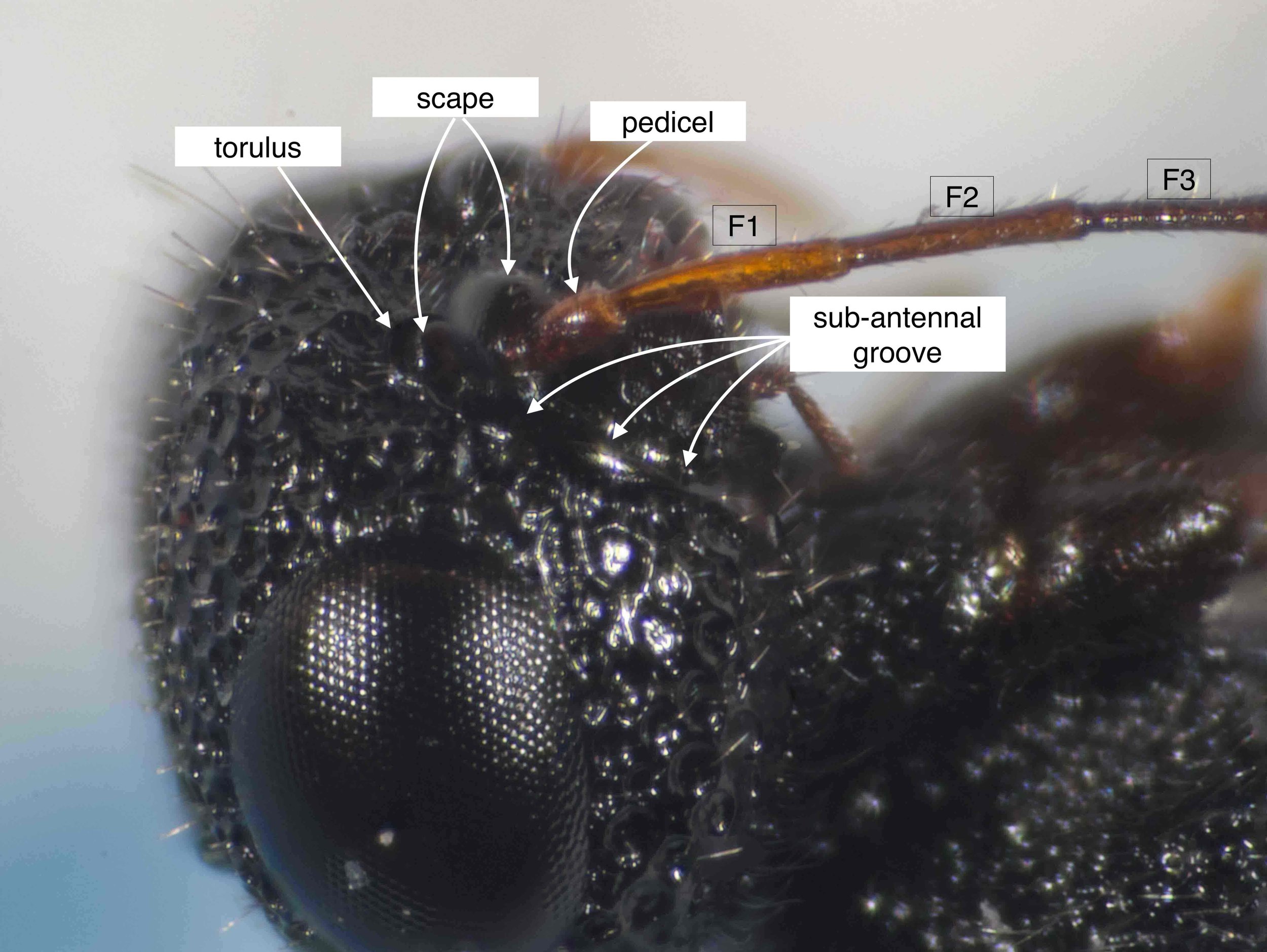
sub-antennal groove present
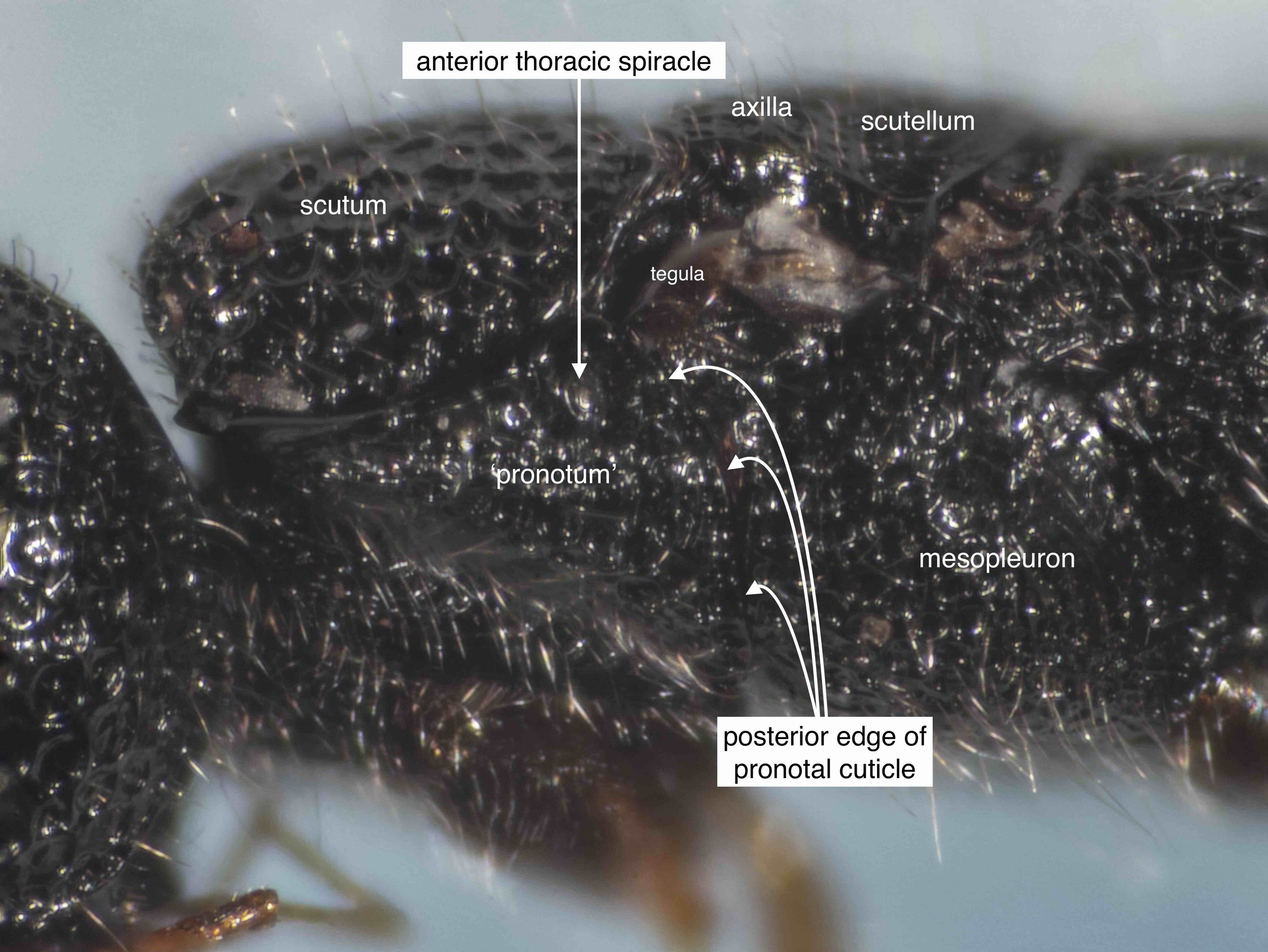
pronotum: absent dorsally, extensive laterally; surrounding the exposed anterior spiracle; prepectus absent
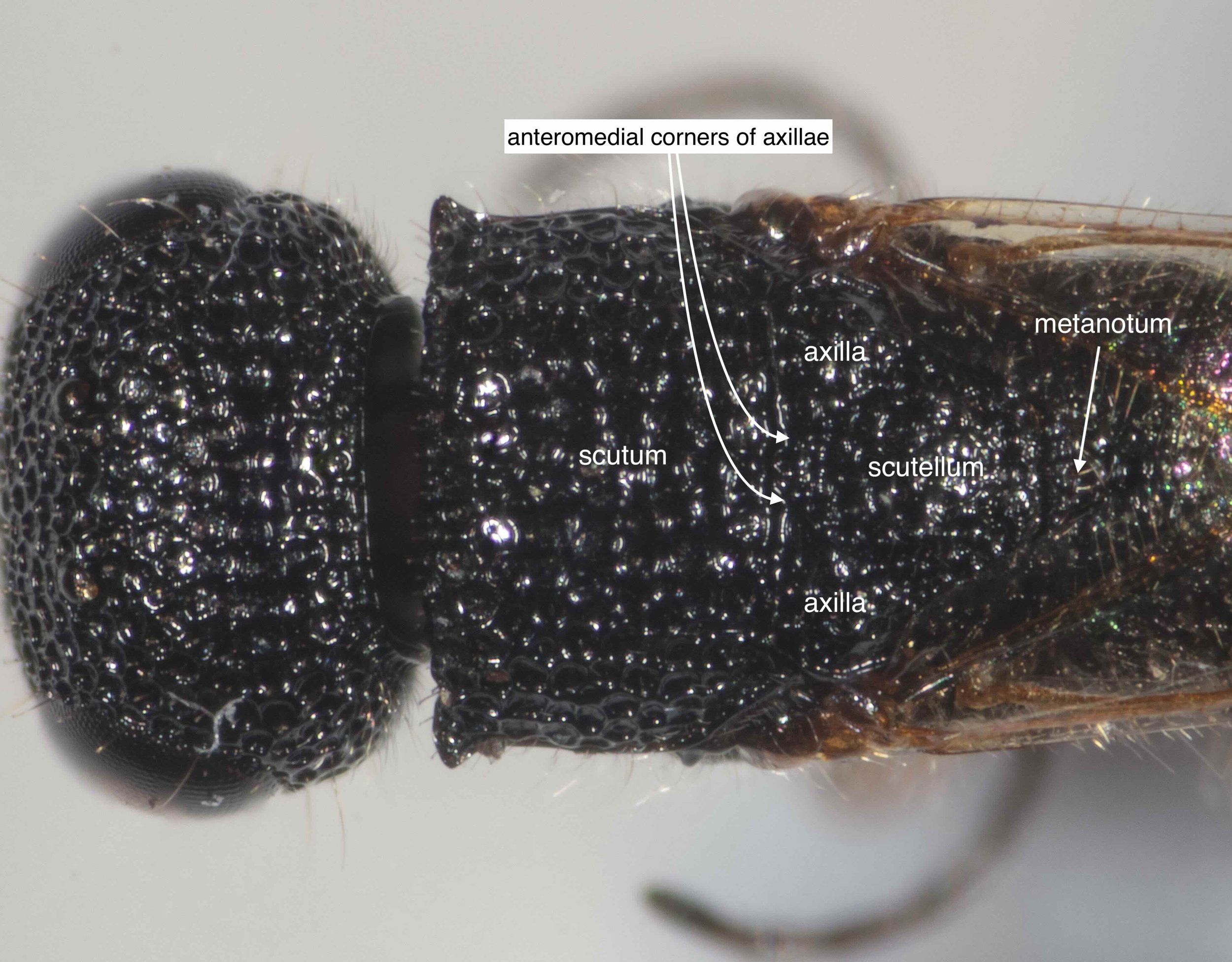
axillae large, narrowly separated
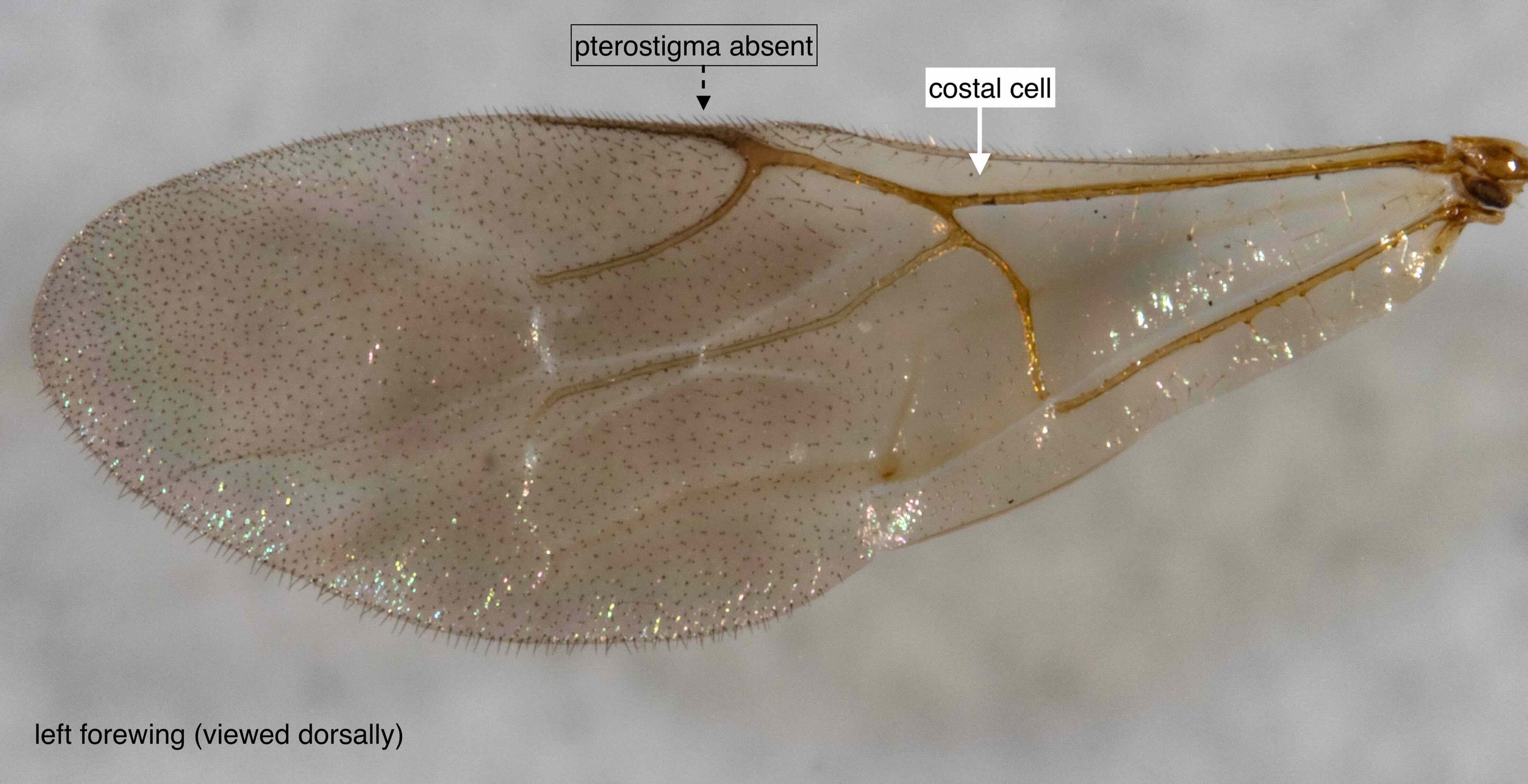
forewing: stigma absent; costal cell present
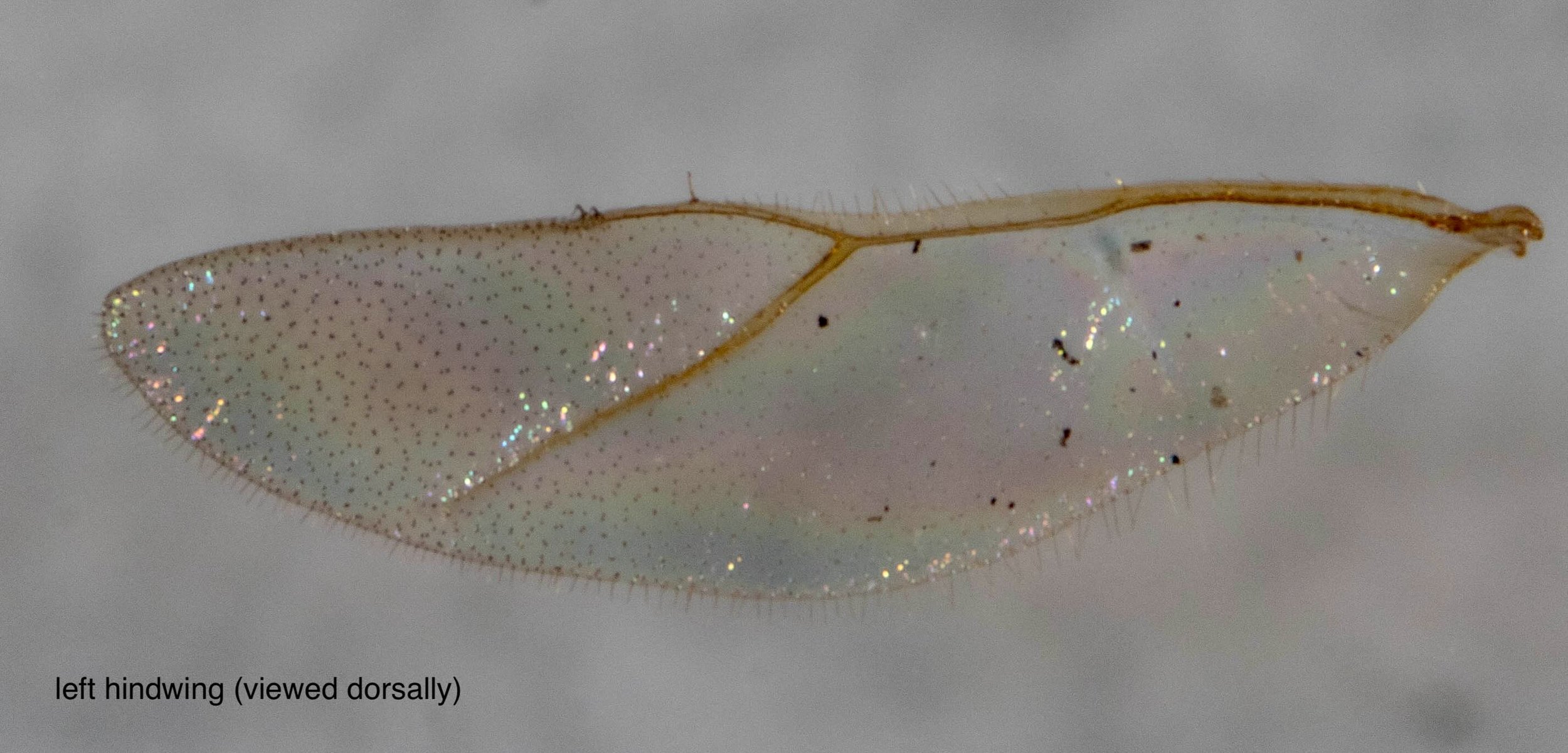
hind wing venation reduced
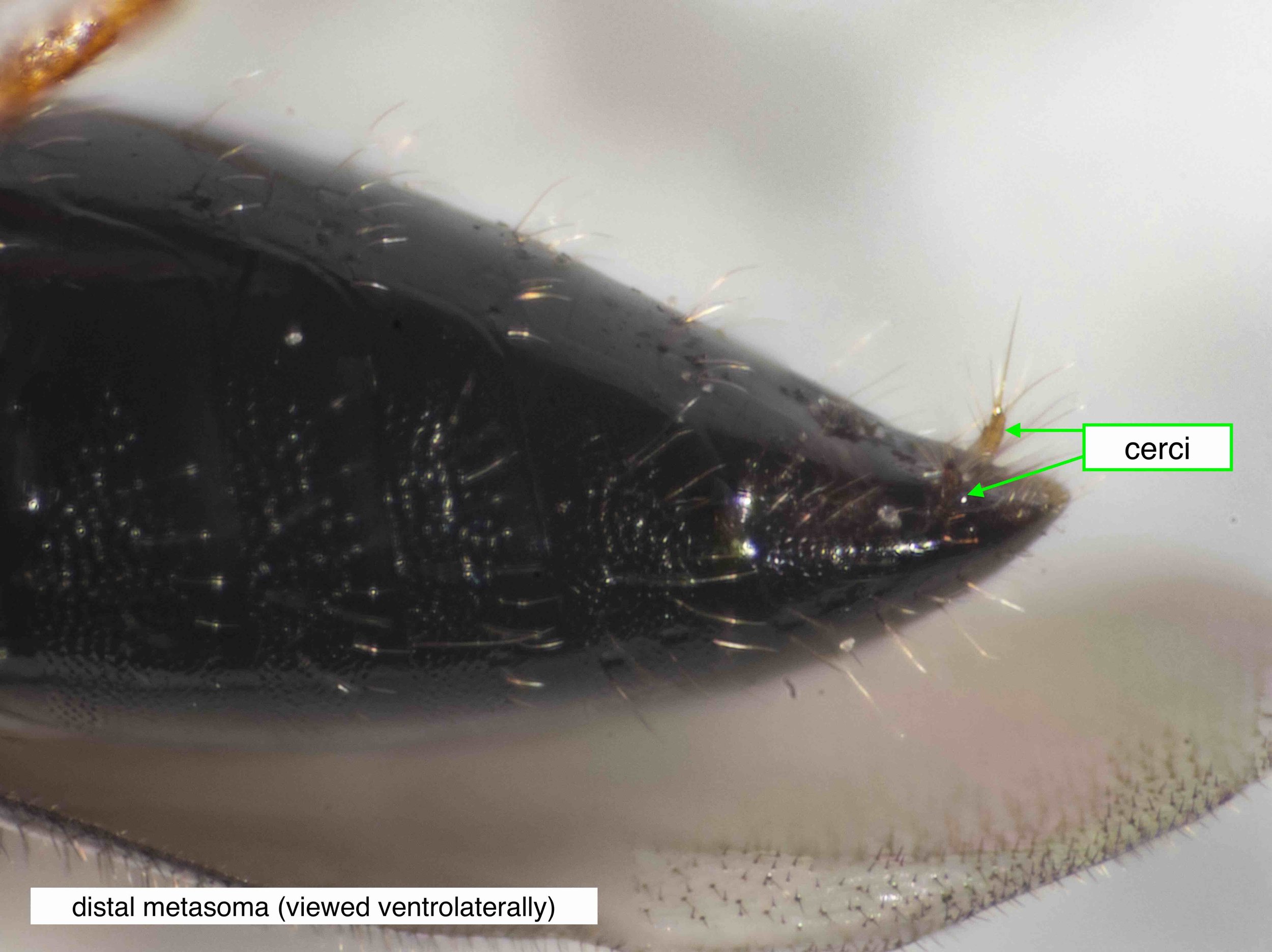
cerci digitiform
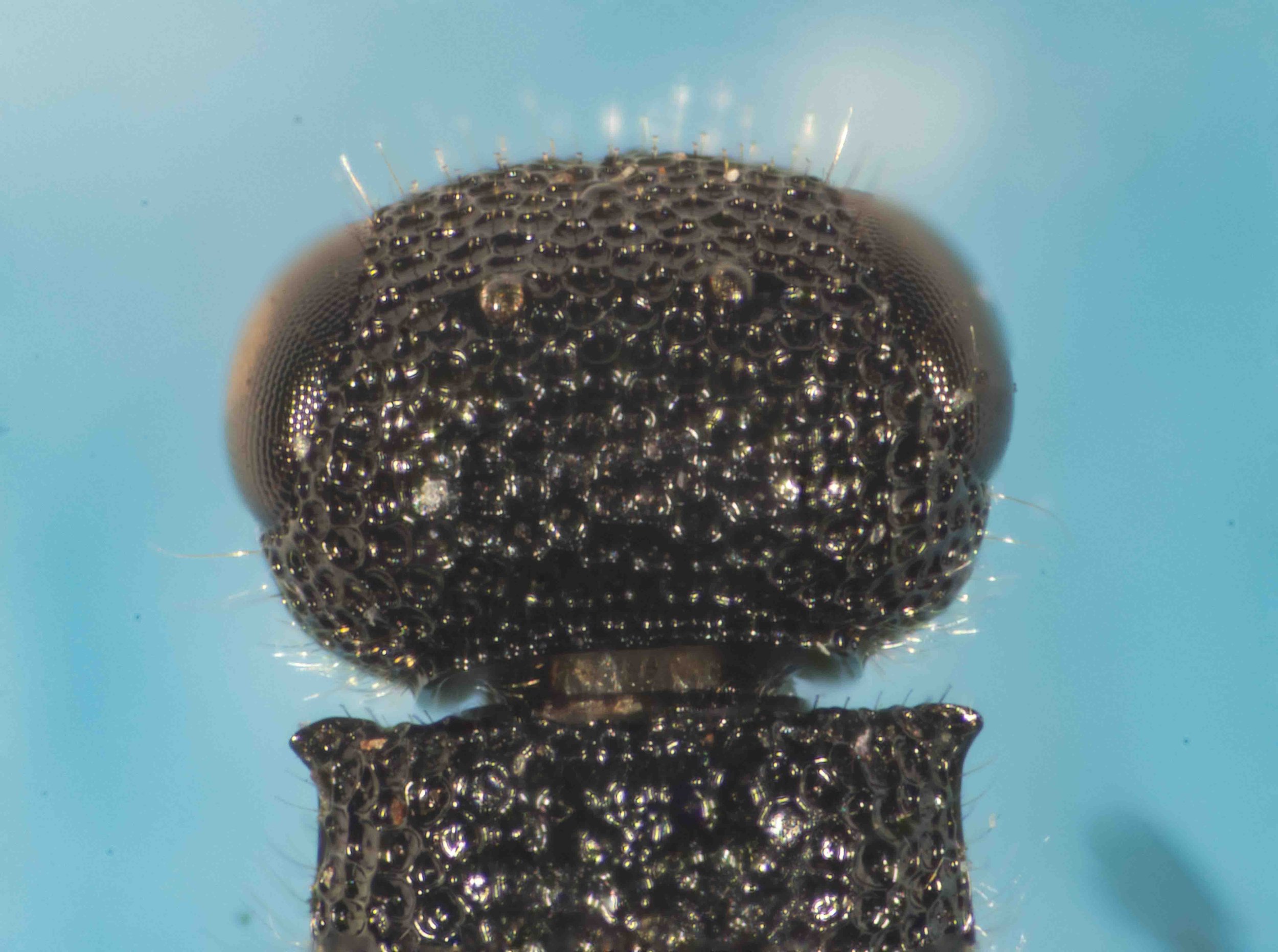

forewing (removed, and under coverslip)
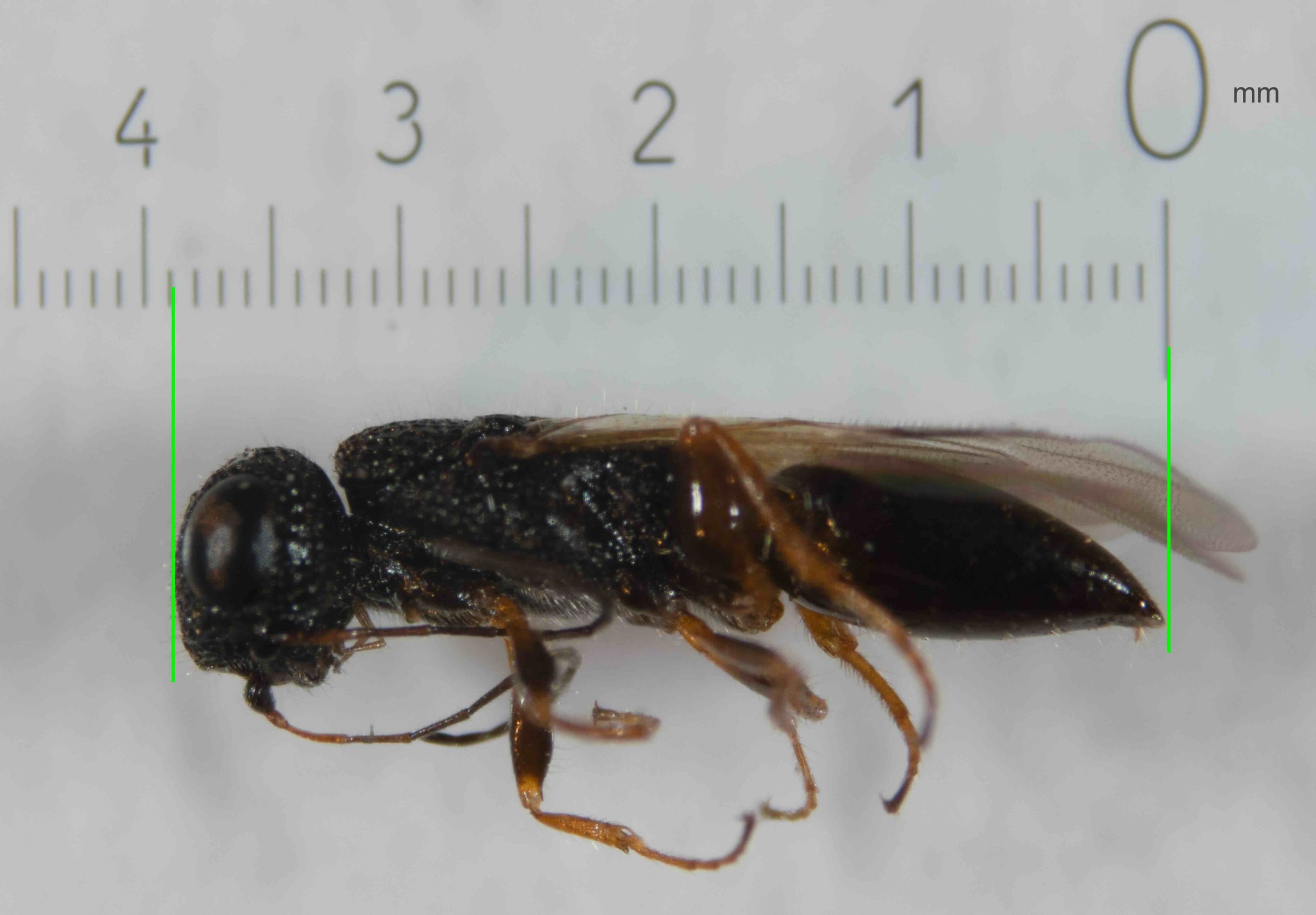
body length
3.9mm
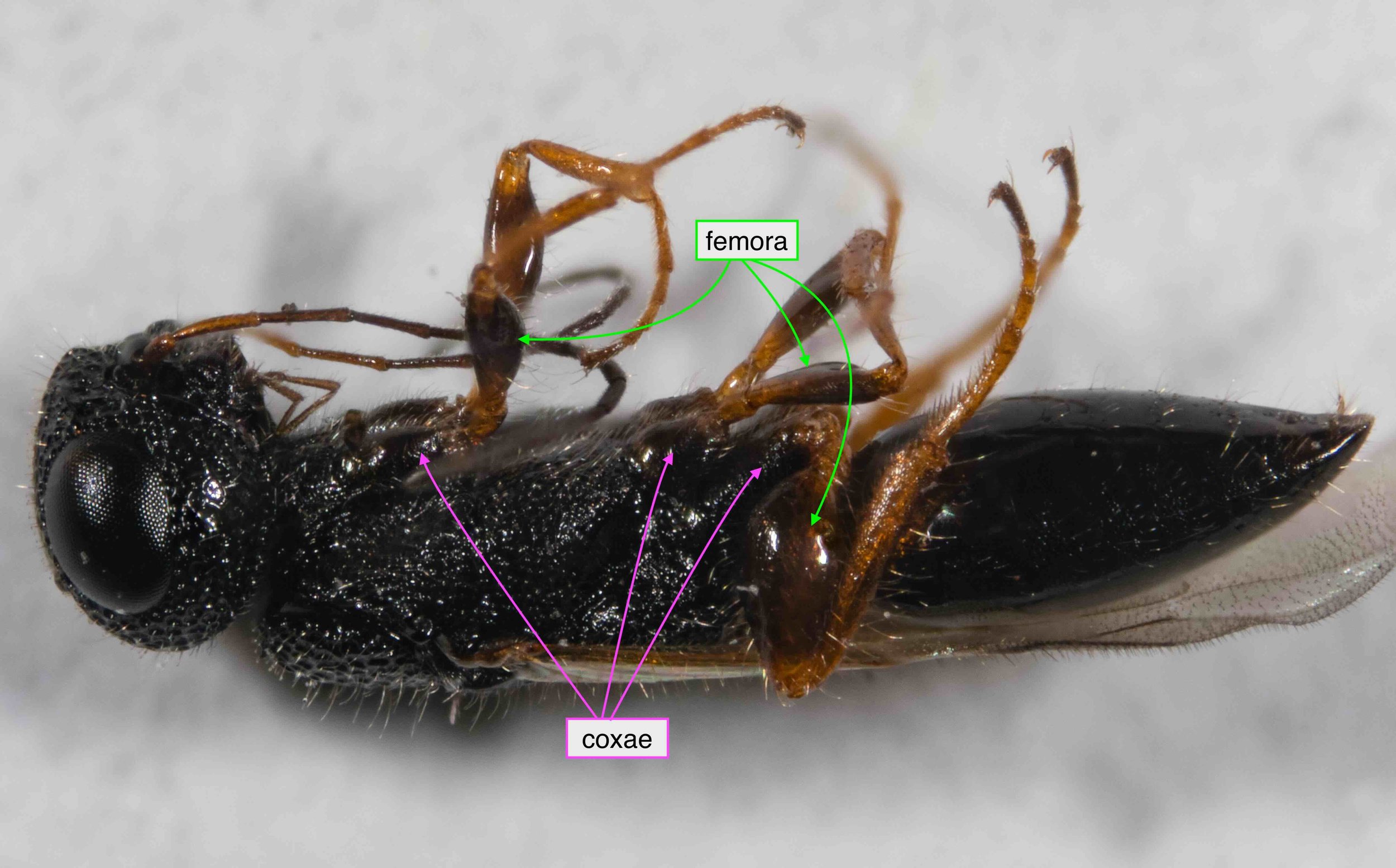
body colour
body
black
legs
orange-brown, with: coxae black; femora infused black
antennae
black, with: pedicel, F1 & F2 orange-brown
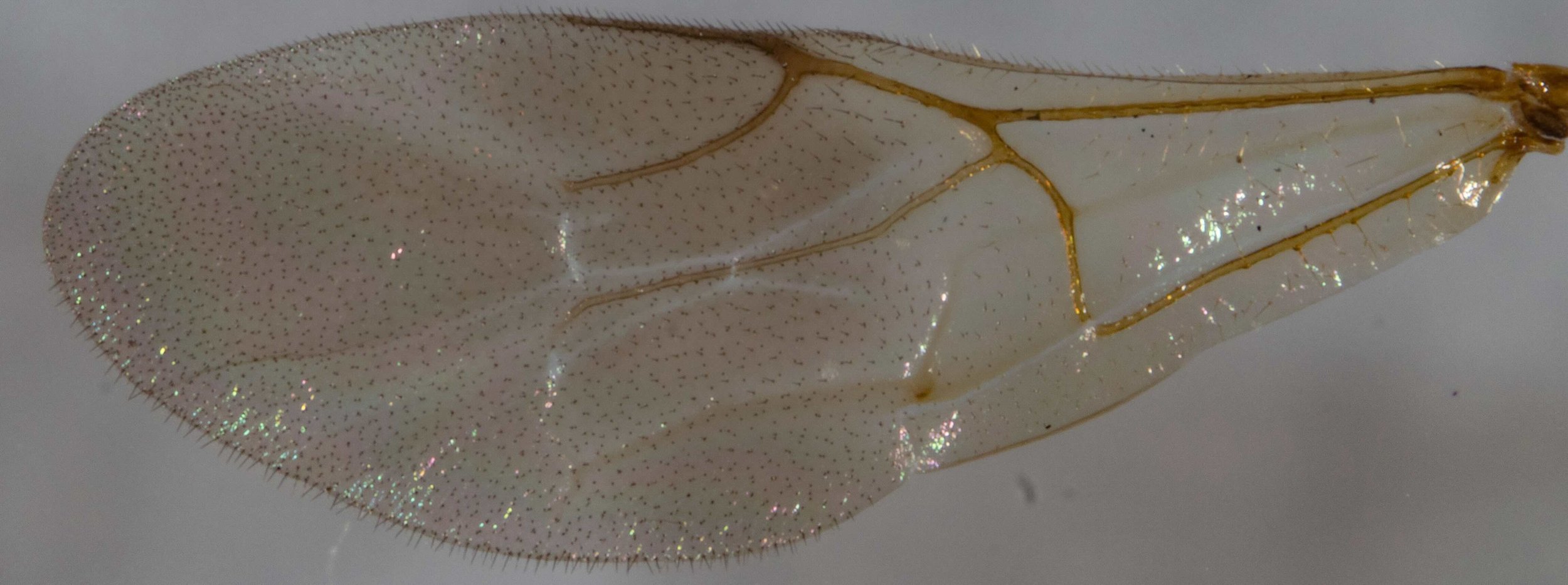
wing colour
hyaline basally; very light infumation in irregular blotches elsewhere. No discrete, dark medial band.
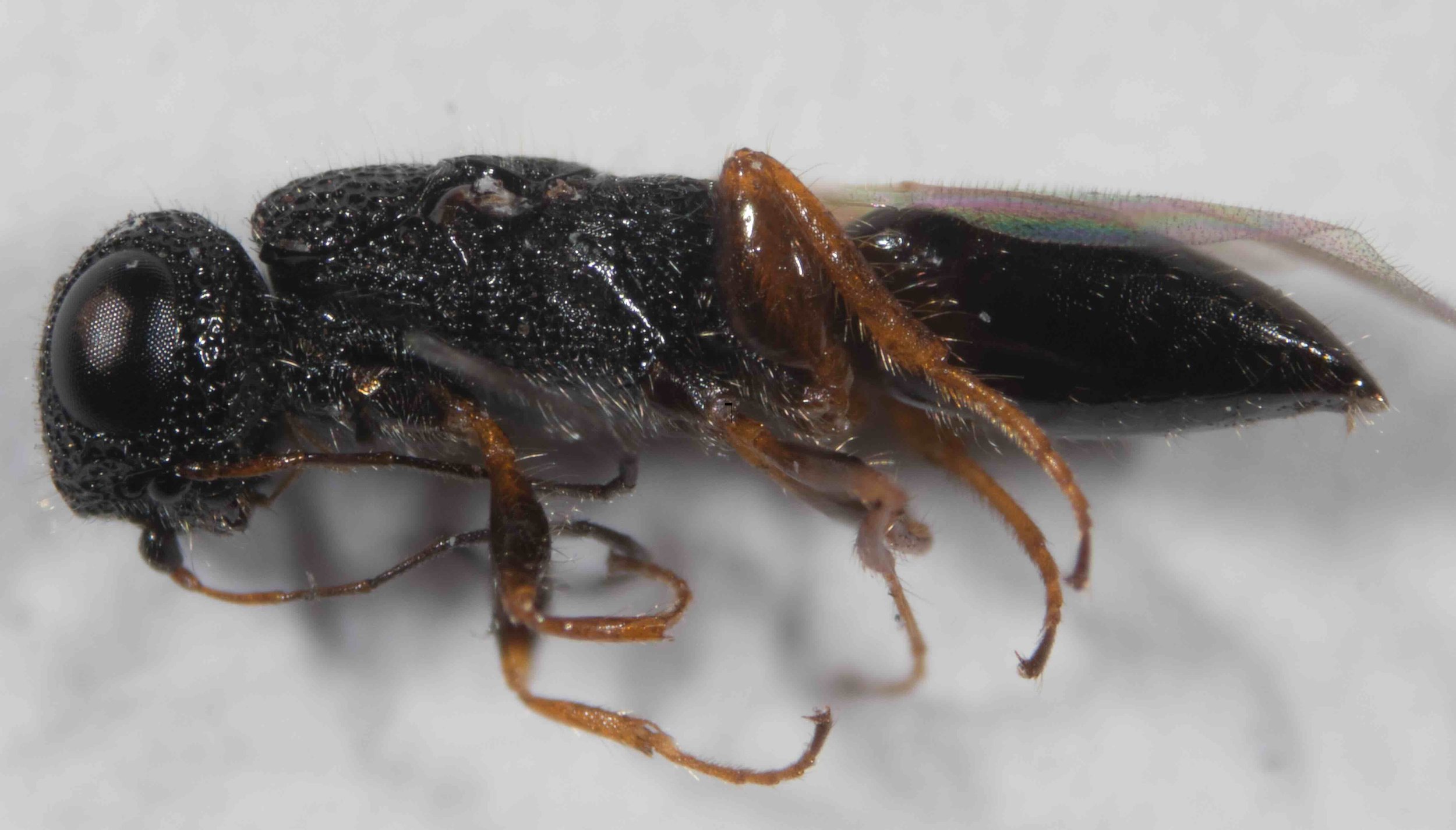
sparse setae
no dense patches of setae
longest setae are on the coxae
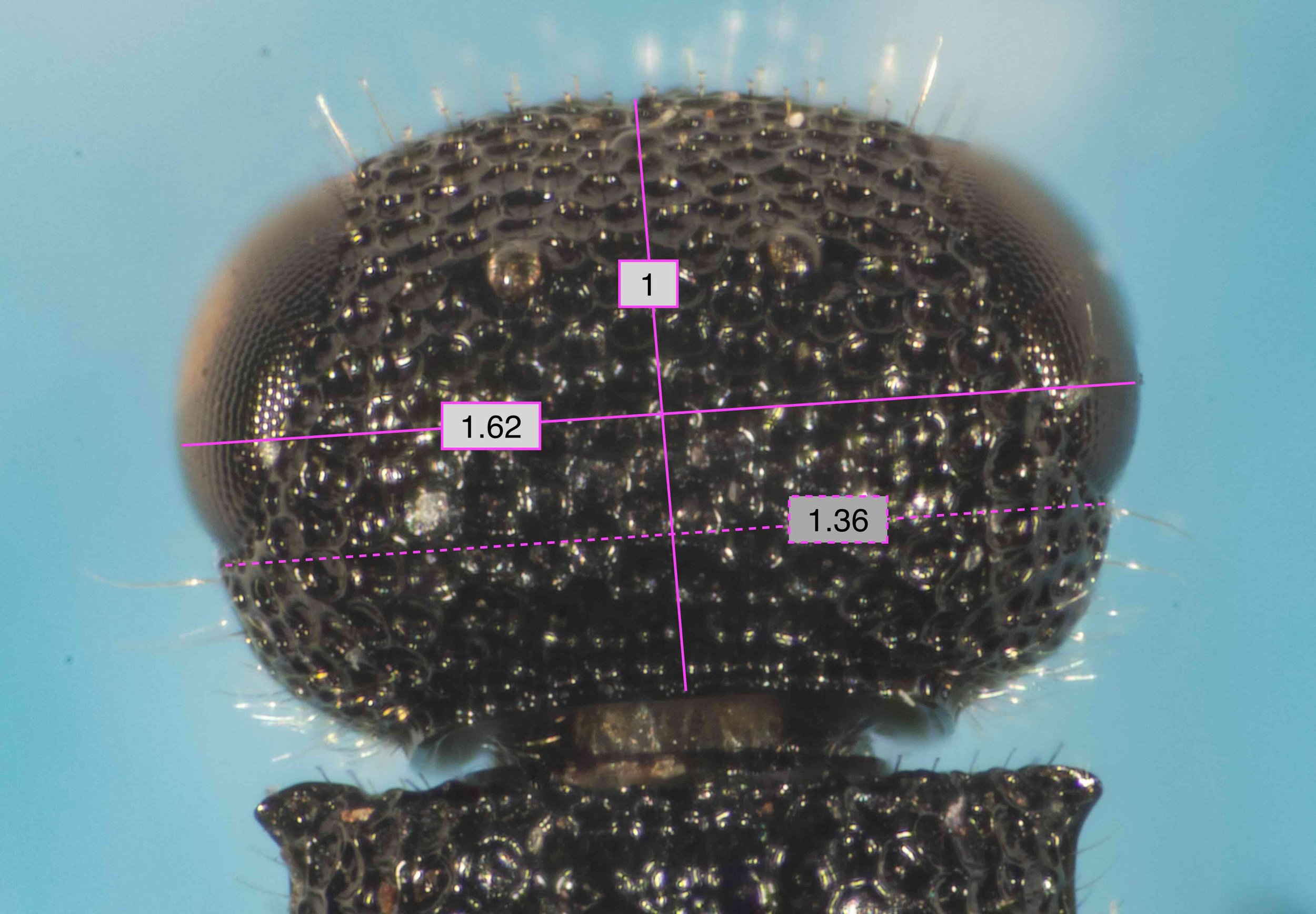
head shape
strongly transverse: width/length = 1.62
note that I assume the eyes are considered part of the head, and that therefore the maximum width (in this species) is quite anterior on the vertex
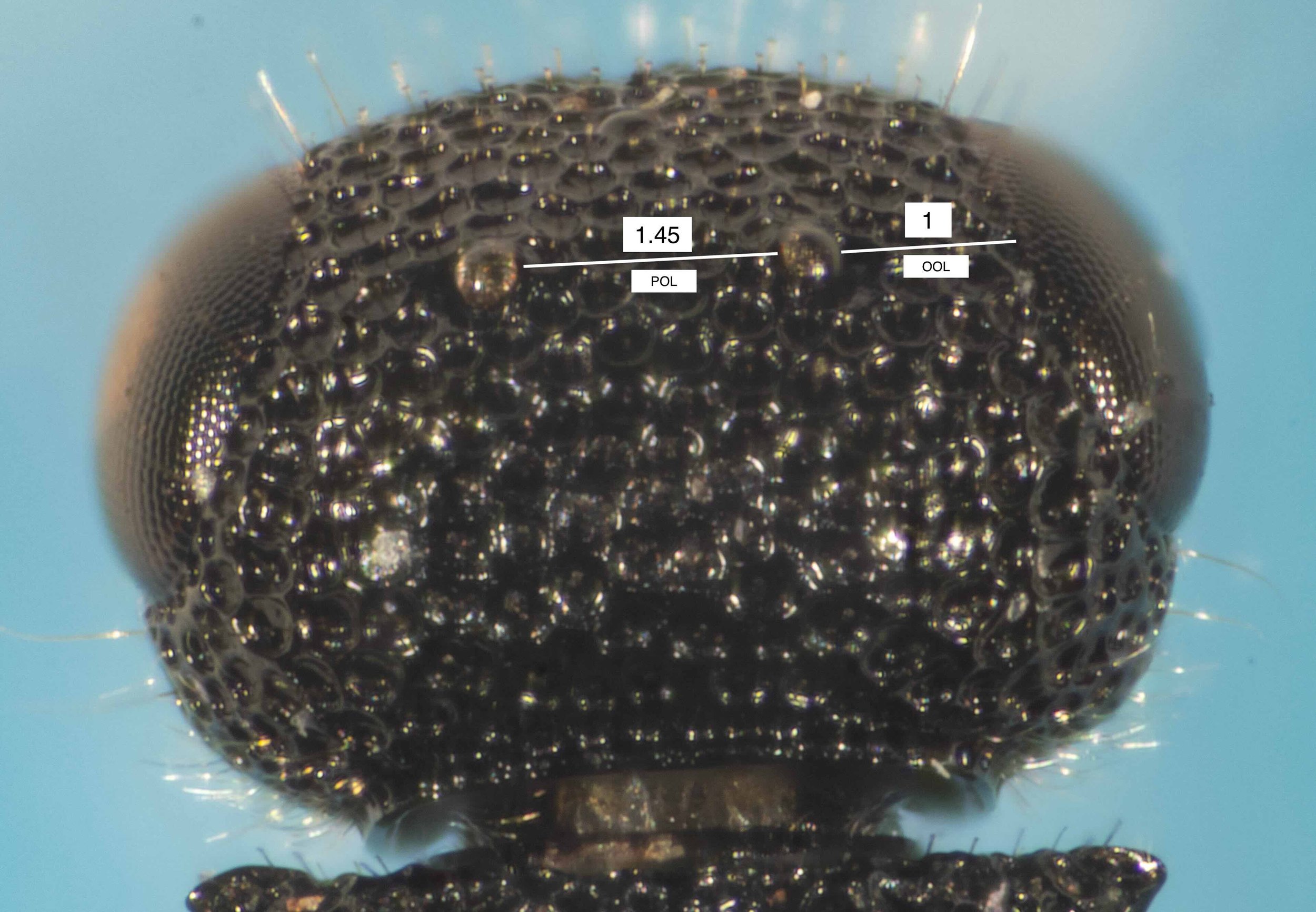
ocellar arrangement
POL/OOL = 1.45
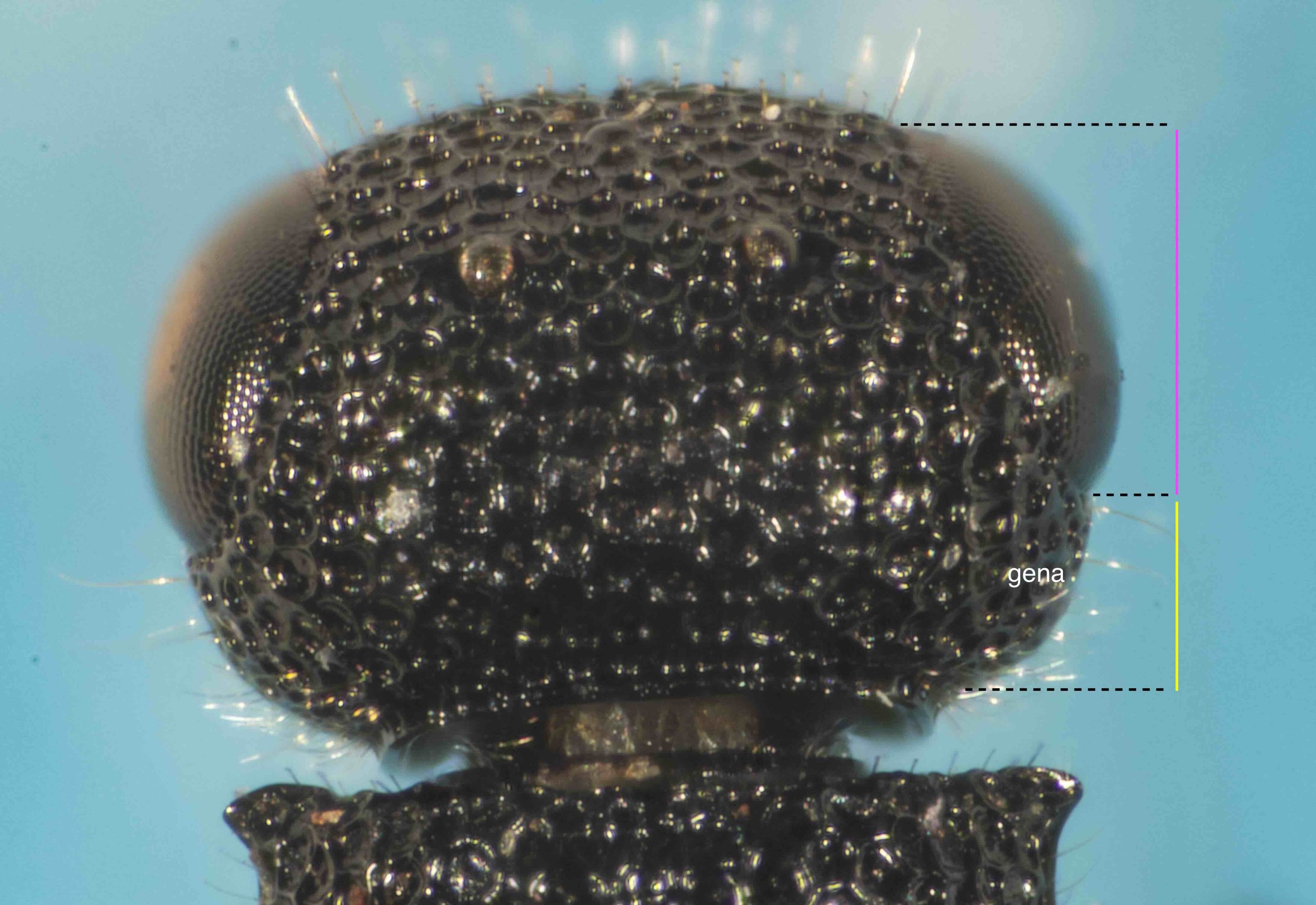
head shape: genae
Genae: much shorter than compound eye (in dorsal view); not bulging, narrower than head width across eyes
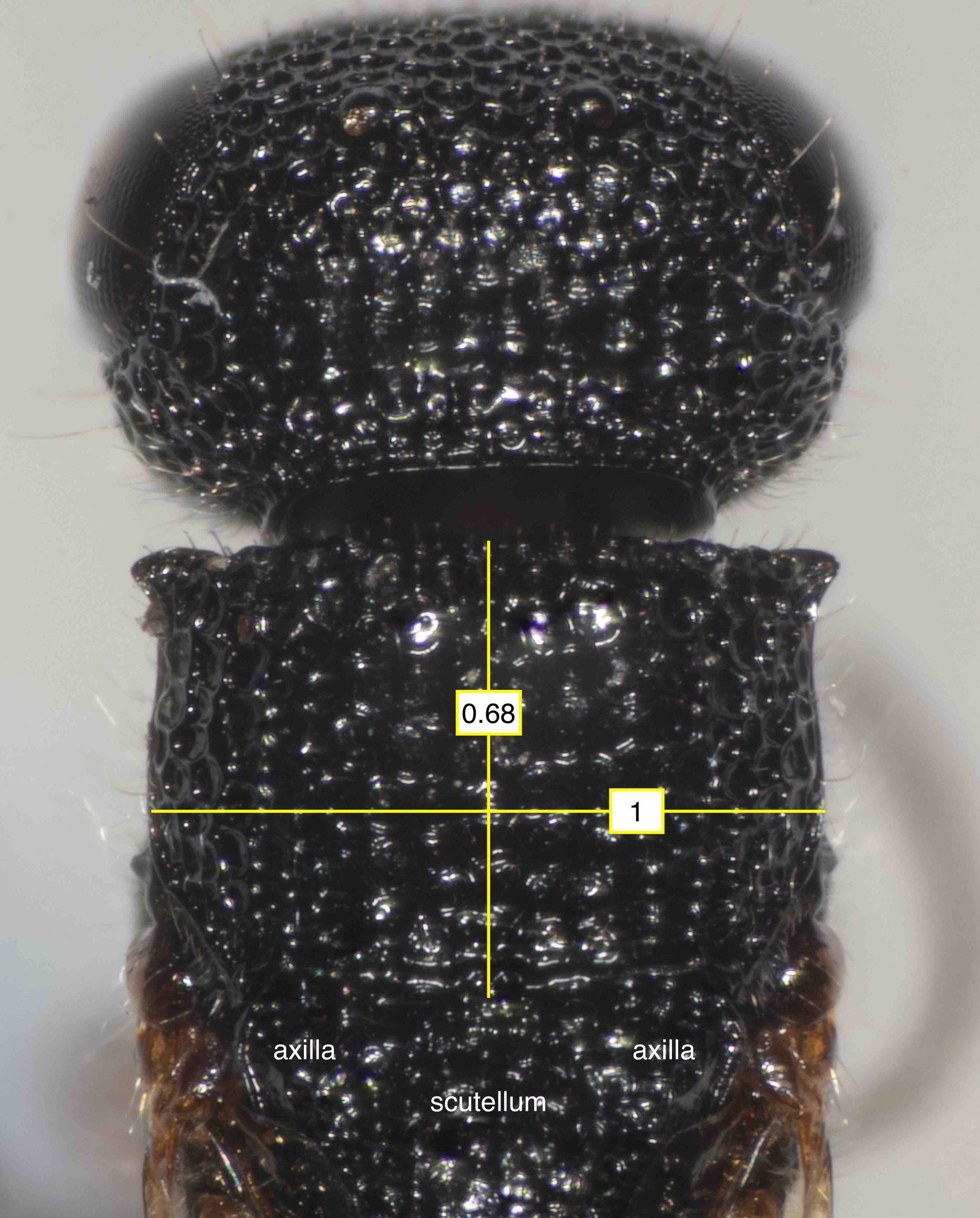
mesoscutum shape
wide: length/width = 0.68
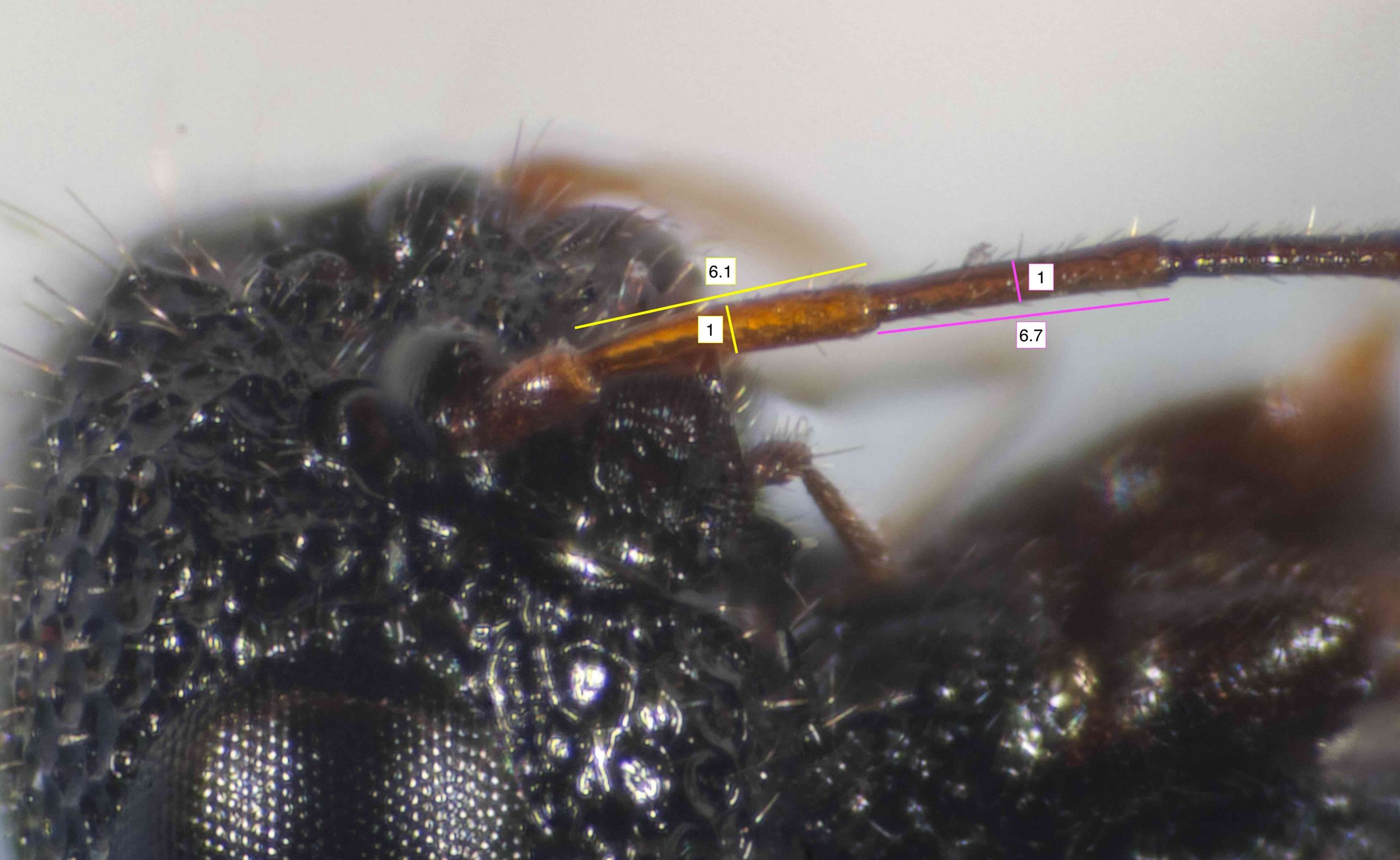
basal flagellomeres: shape
length/width: F1 (yellow) = 6.1; F2 (pink) = 6.7
width measured at "approximate midpoint of segment", as per Shaw (1990)
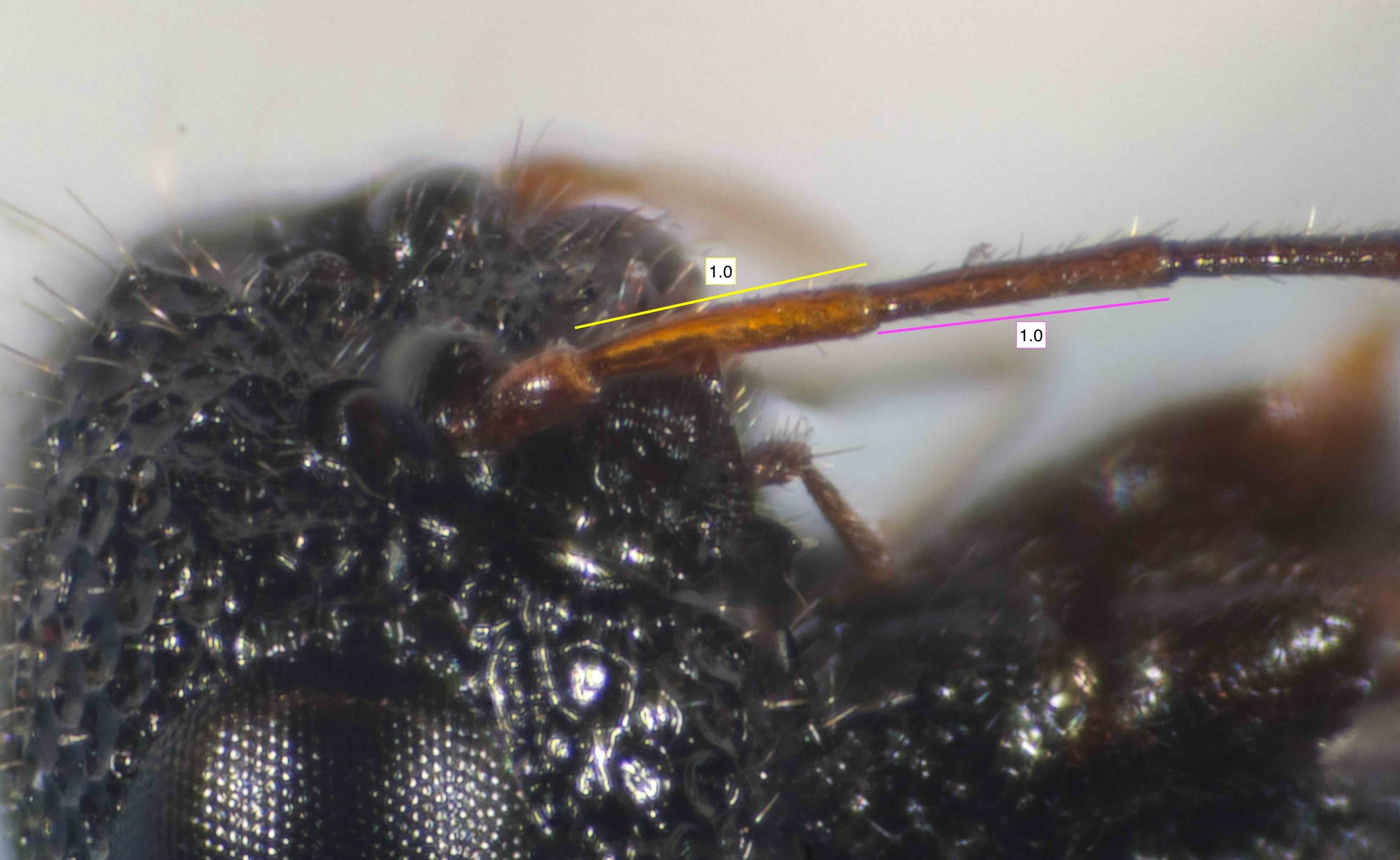
basal flagellomeres: relative lengths
F1 (yellow)/F2 (pink) = 1.0

forewing venation
M+Cu1 & Cu1 spectral; 1mu & Rs apex absent
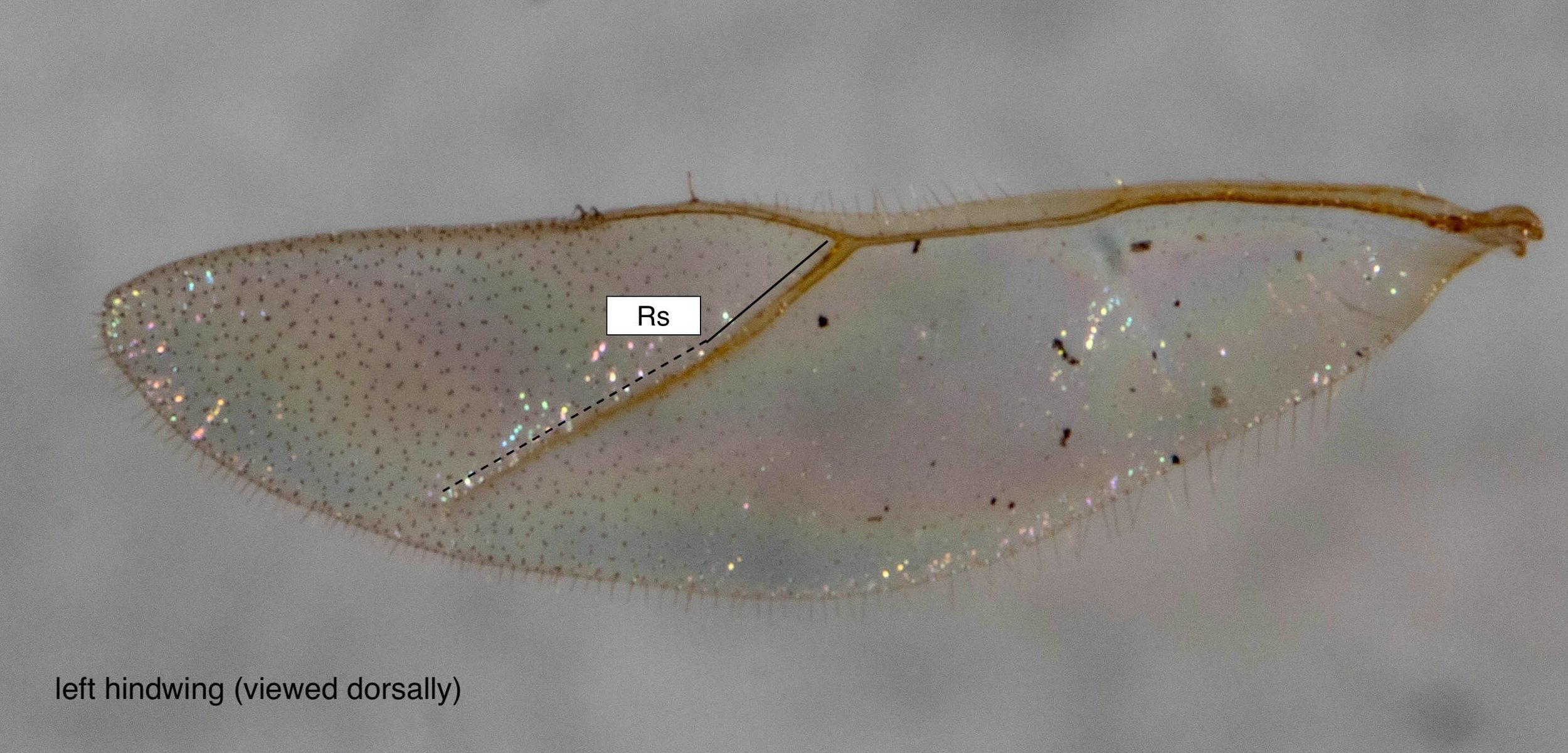
hindwing venation
Rs: basal 1/3 tubular/sclerotised; apical 2/3 infumate-spectral, tapering out before reaching wing margin
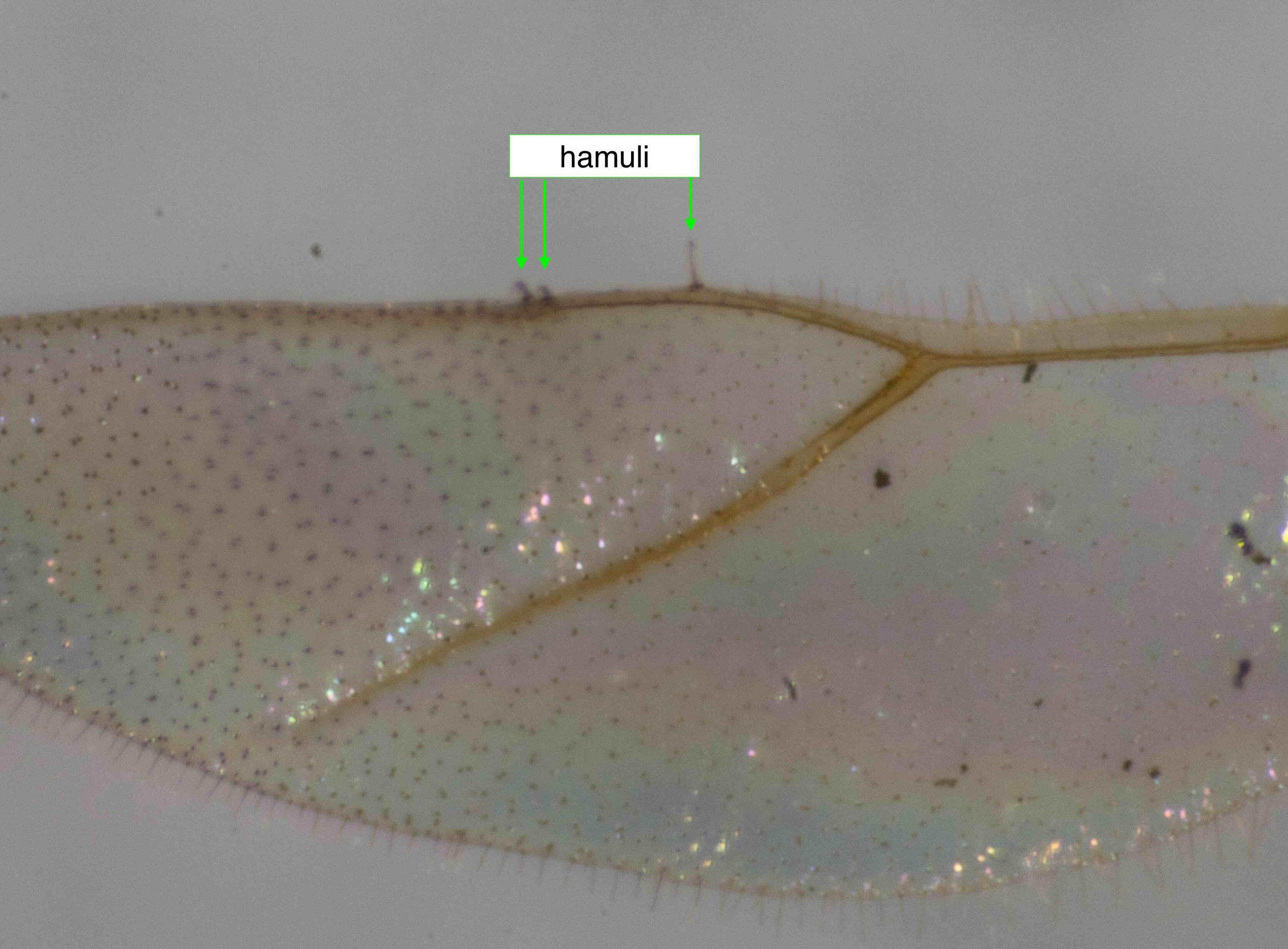
hindwing hamuli
1 long, 2 short

antennal shape
slightly wider apically than basally
Note: antenna removed and imaged under coverslip to ensure planar view. Note too that the width of F1 is just slightly greater than F2 at the midpoint, but narrower at the extreme base. It is unclear exactly where Shaw (1990) took the measurements reported.
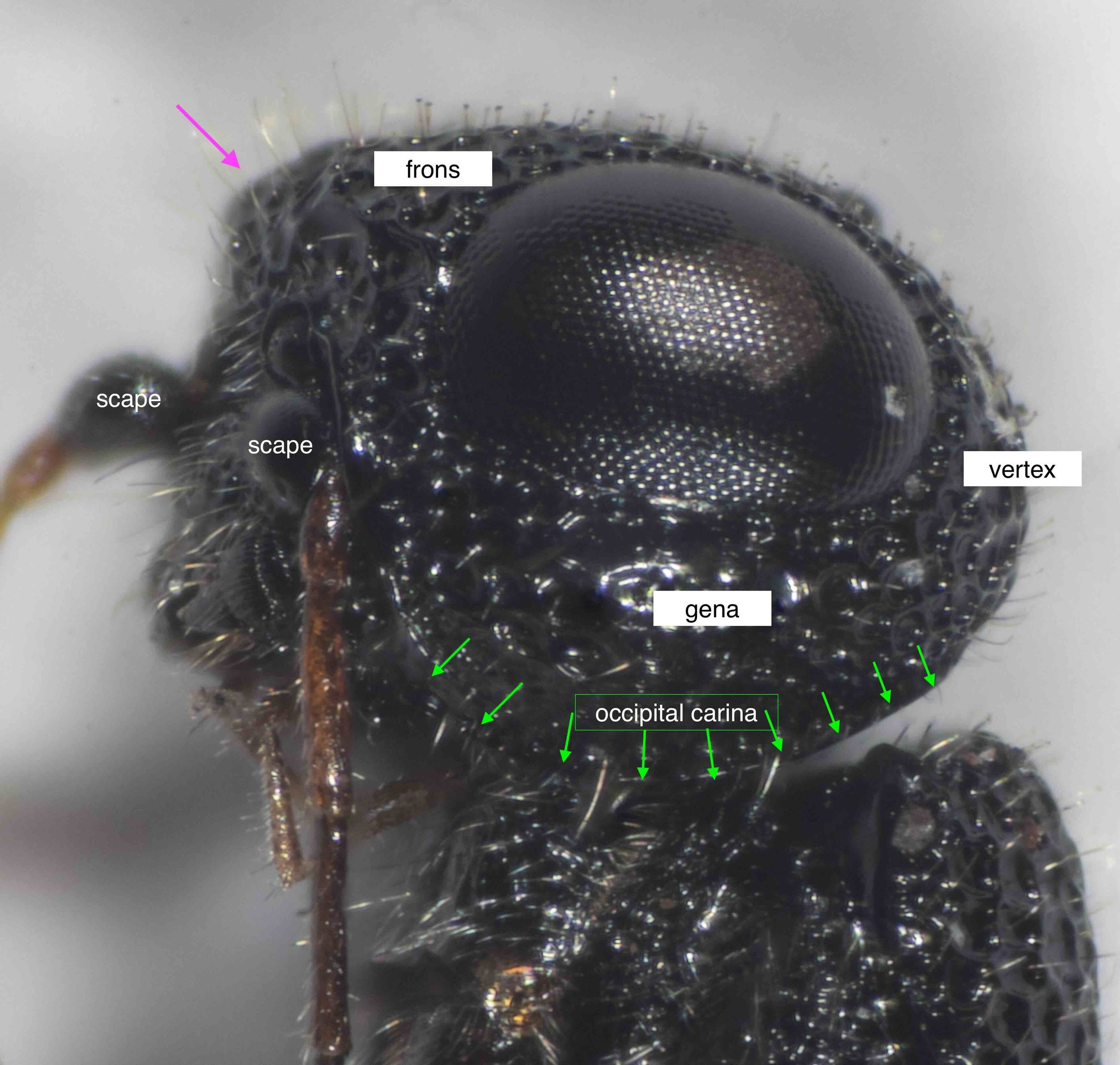
frons shape & occipital carina
frons projecting above antennal sockets (pink arrow)
occipital carina basally curving towards mandible (green arrows)

frontal carina; mandibles
transverse carina present above antennal sockets, with pair of blunt projections either side of midline (stars)
base of mandibles with transverse sulcus, flanked by series of longitudinal striae. Naumann (1987) notes this as feature in male, but not female, M. troglodytes.
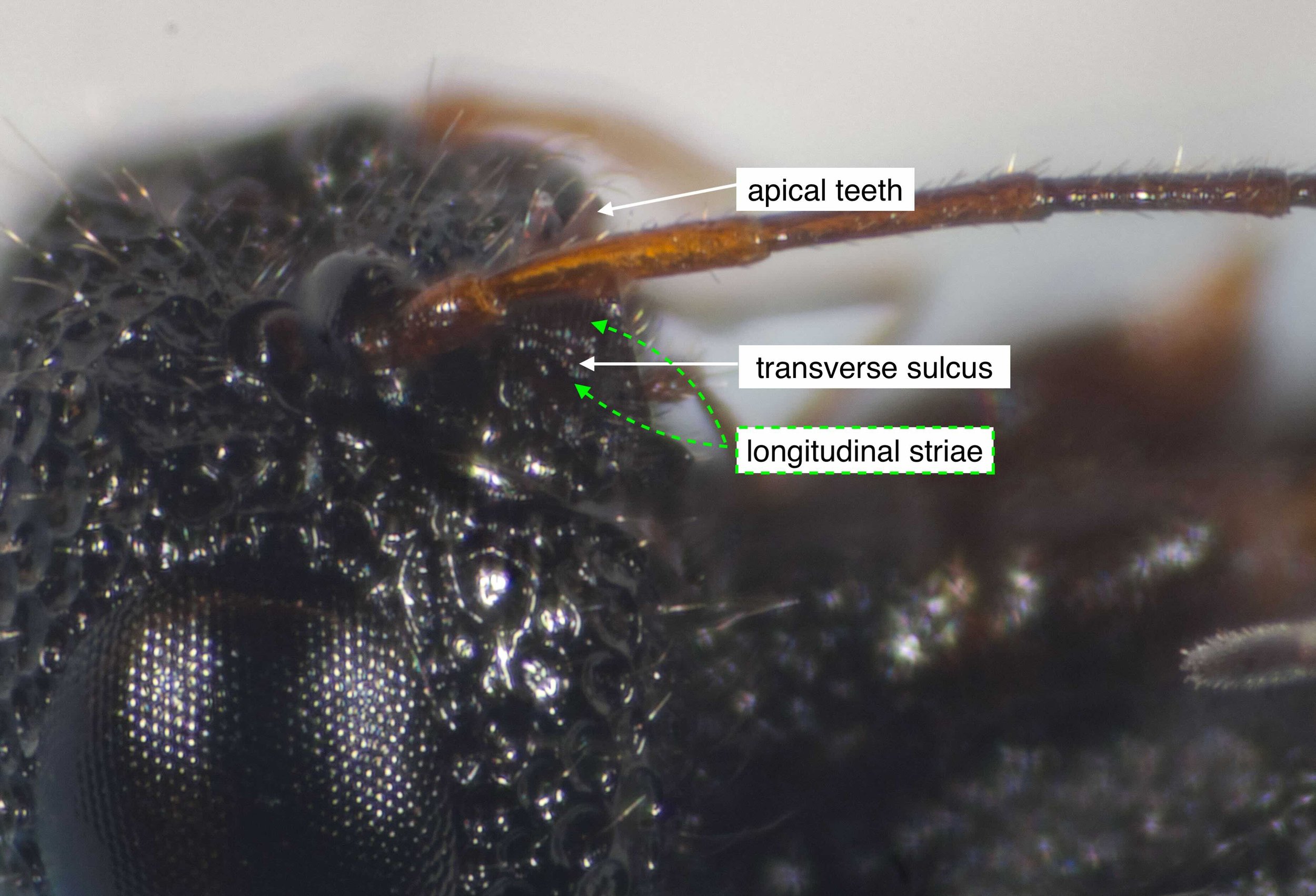
mandibles
base of mandibles with transverse sulcus, flanked by series of longitudinal striae. Naumann (1987) notes this as feature in male, but not female, M. troglodytes.
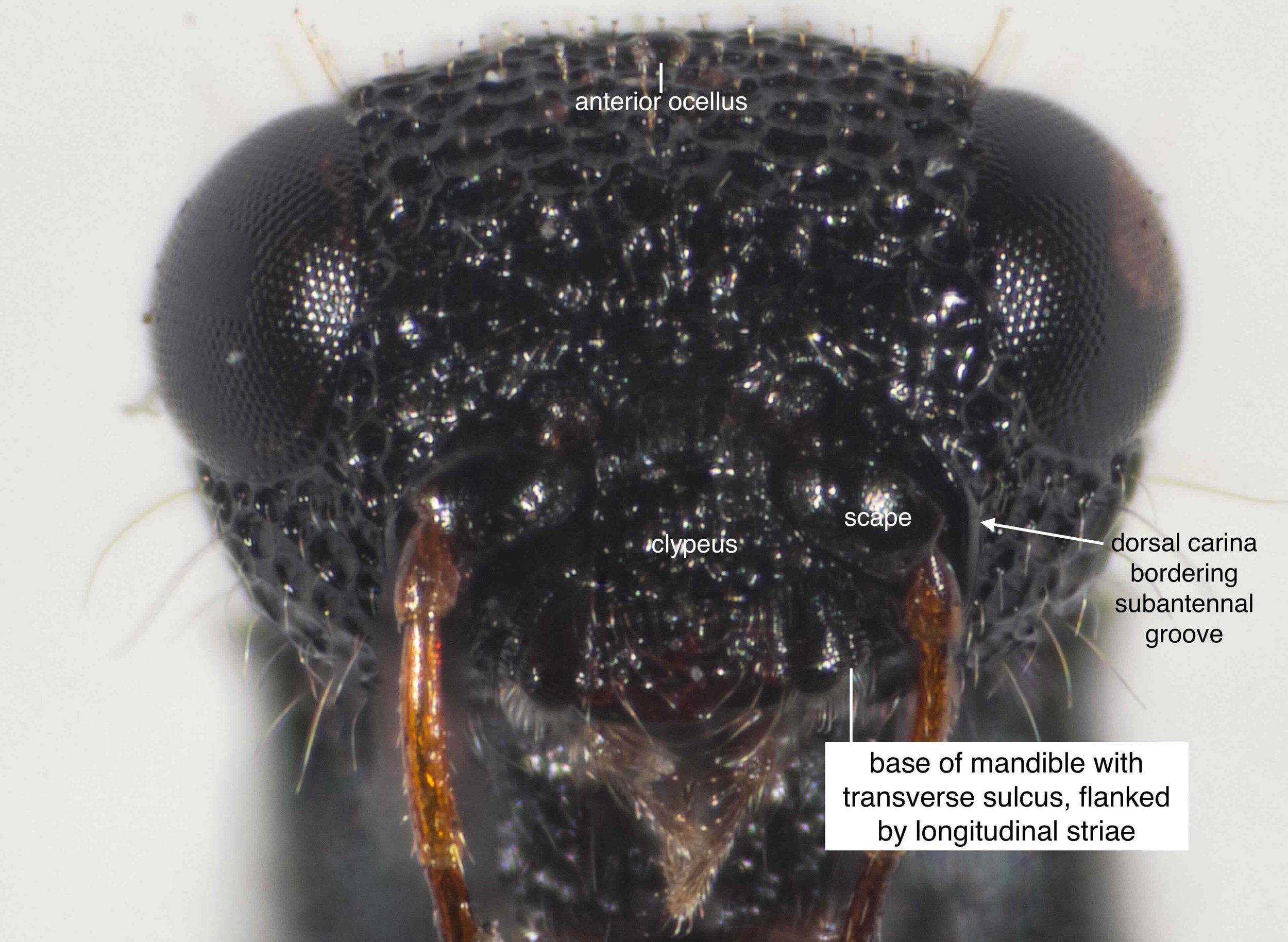
mouthparts, head viewed ventrally
base of mandibles with transverse sulcus, flanked by series of longitudinal striae. Naumann (1987) notes this as feature in male, but not female, M. troglodytes.
subantennal groove bordered dorsally by a sharp carina
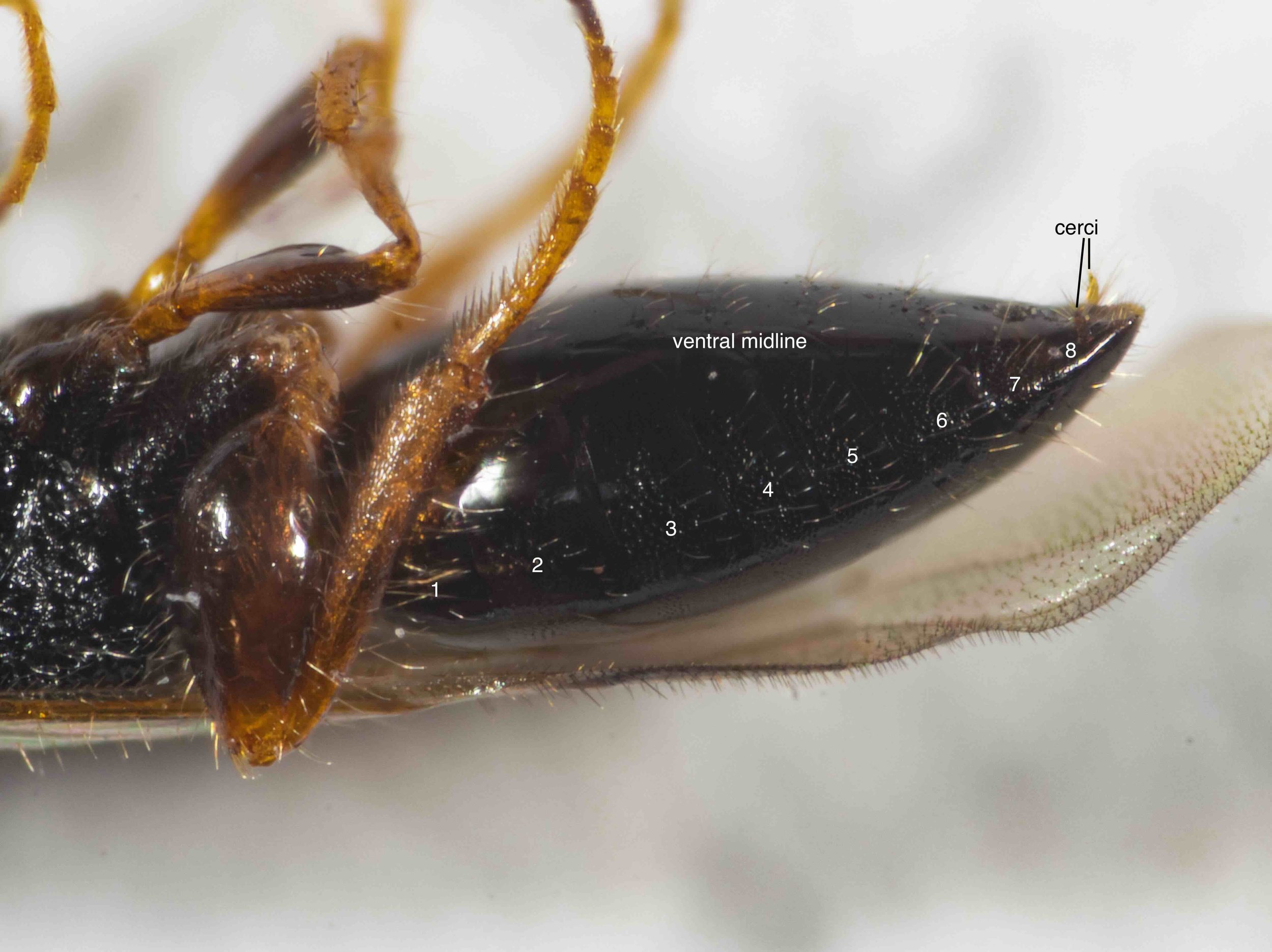
metasoma shape
shiny, sparse setae, pointed apically
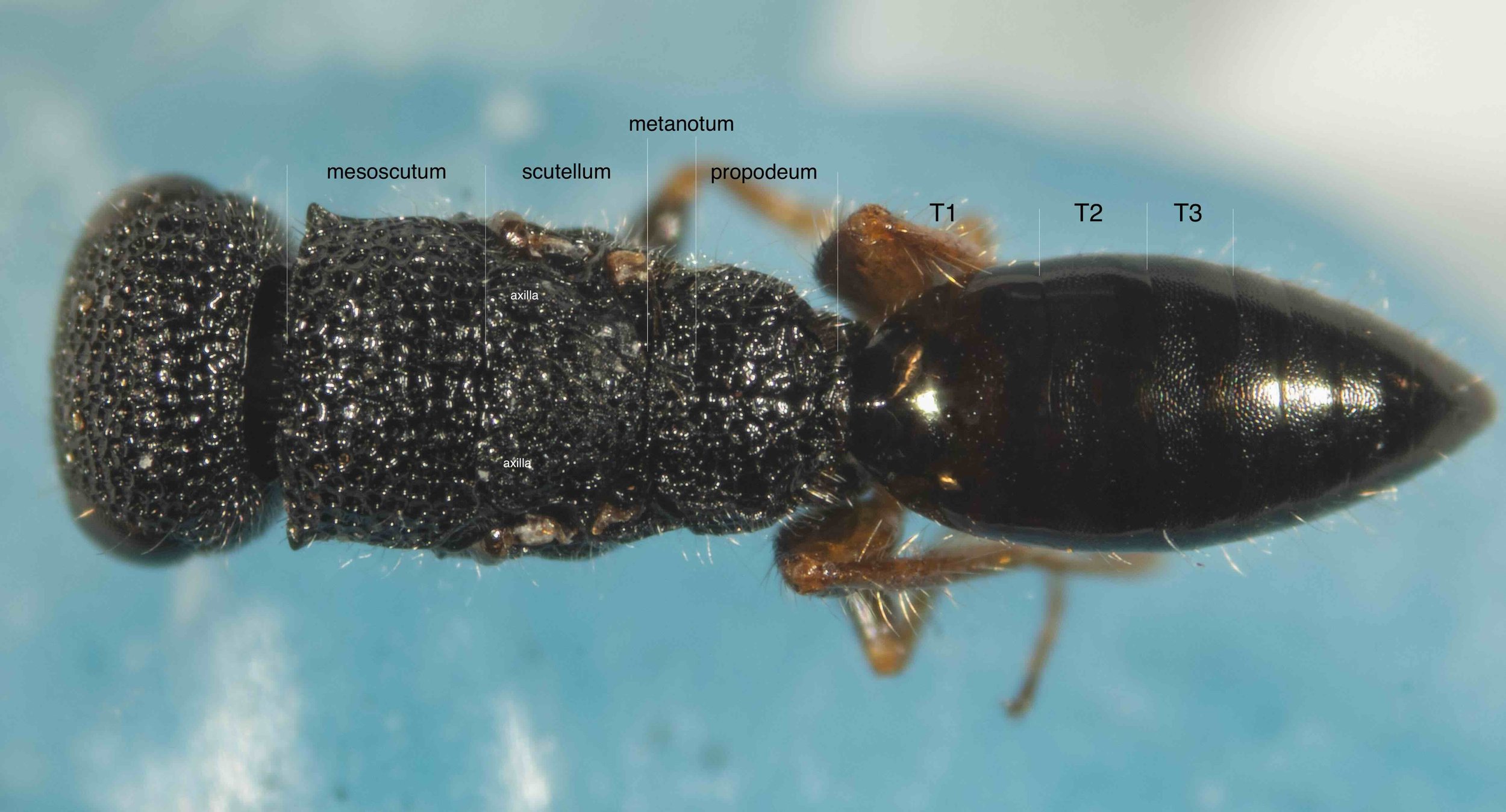
dorsal overview (all wings removed)
I made the decision to remove the wings in order to fully view the propodeum and basal metasomal segments. This may have been a bit rash ... this may end up being quite a special (ie rarely-collected) male, and should be lodged with a museum. Anyway, done now. All four wings were mounted on glass slides (dry) and imaged under cover slips.
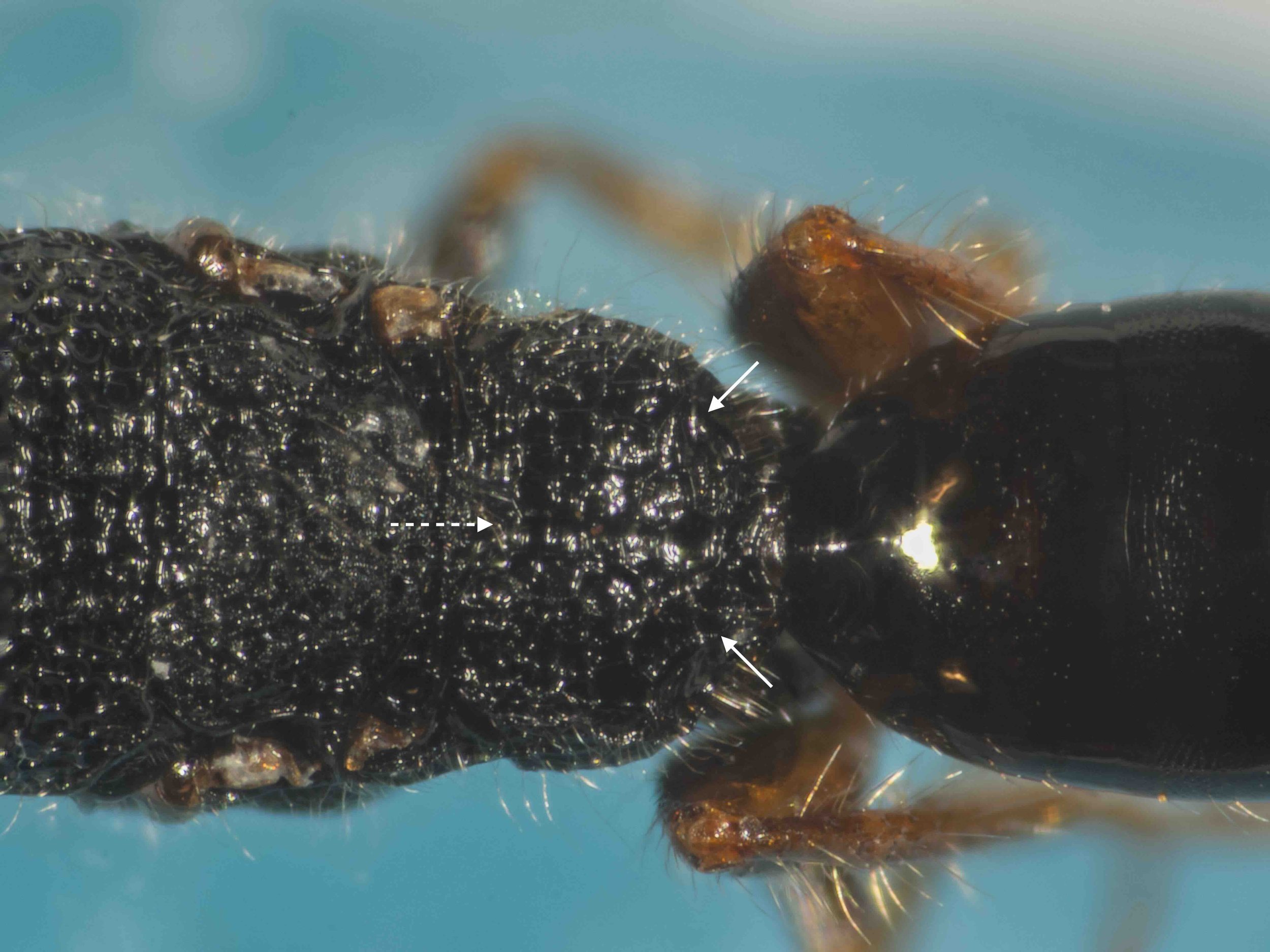
propodeal sculpture and structures
The heavily reticulate surface of the propodeum makes recognition of carinae and furrows a challenge. There is a median row of fovea (dashed arrow) ... would Shaw have called this a furrow, I wonder (?). The solid arrows indicate the location of putative lateral carinae. Again, I'm not confident that these would be considered carinae ... but see the dorso-lateral view.
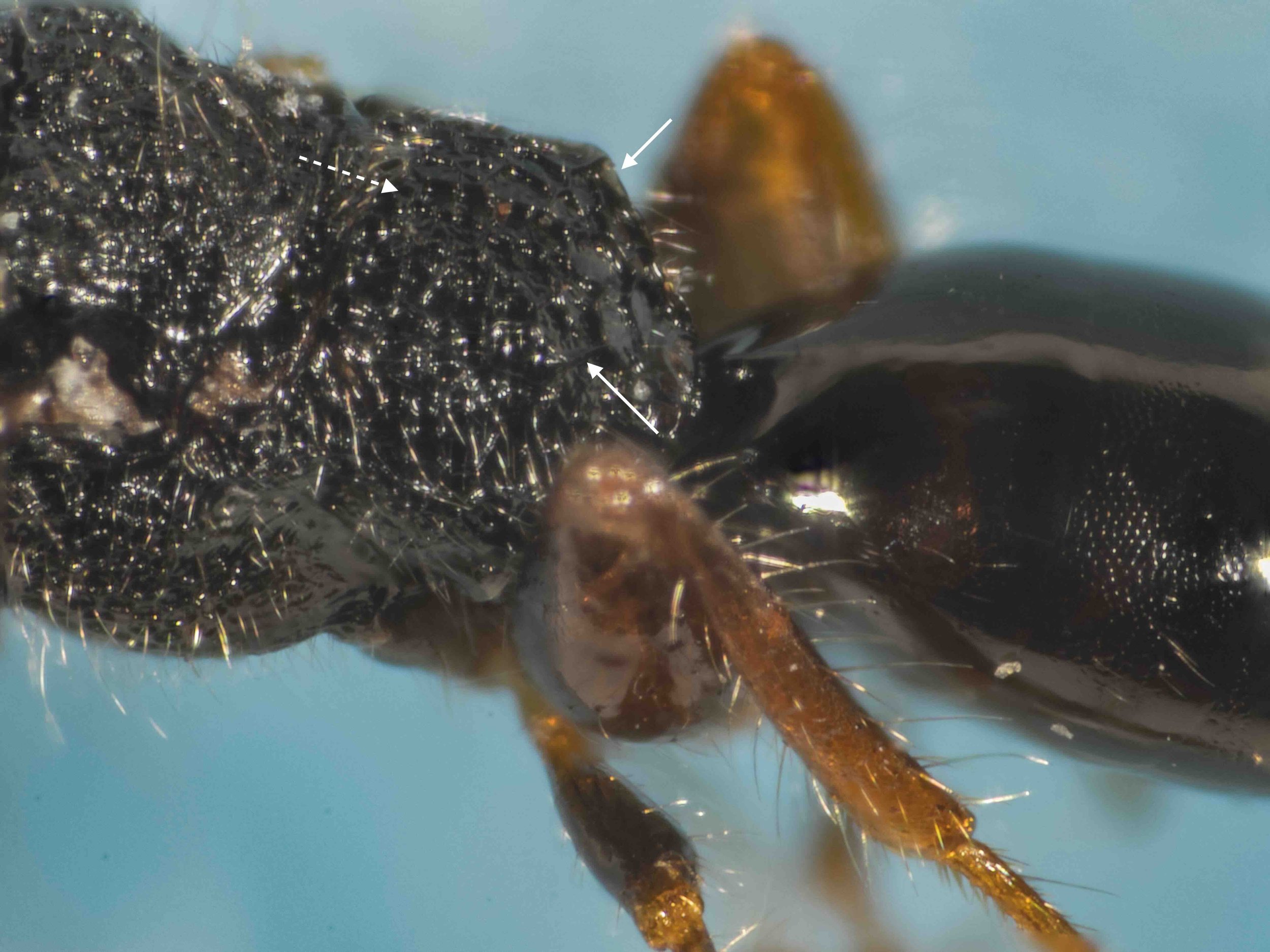
propodeum, dorsolateral view
The dashed arrow indicates the midline, and the medial row of fovea. It is not deeply impressed, so I assume this would not be considered a furrow.
The solid arrows show a suggestion of lateral carinae ... most evident on the right side in this image.
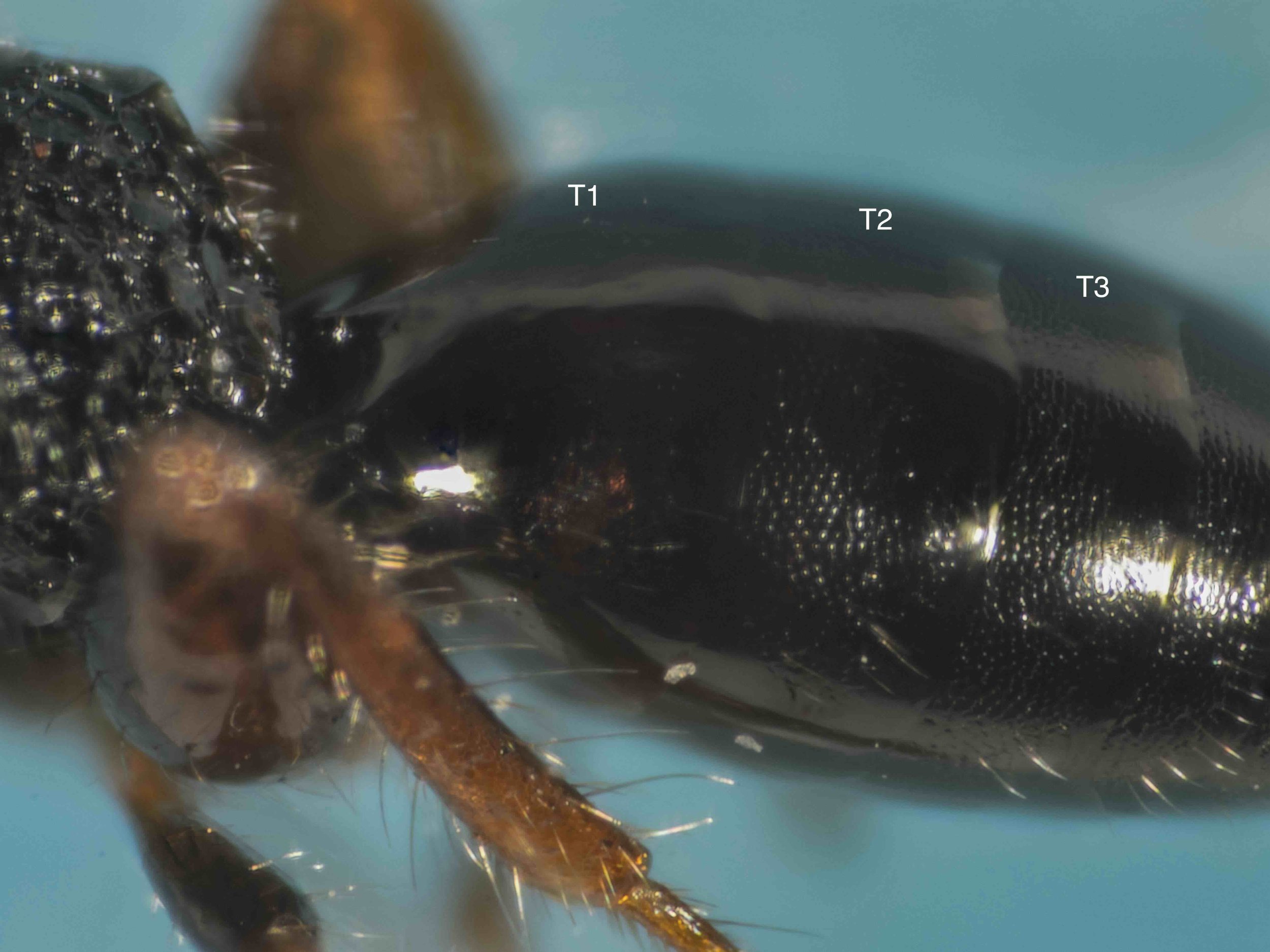
T1-T3 microsculpture (dorsolateral view)
T1: smooth and shiny, with very spares, tiny punctures
T2 & T3: fine coriaceous ('shagreened') texture, with sparse, tiny punctures







































